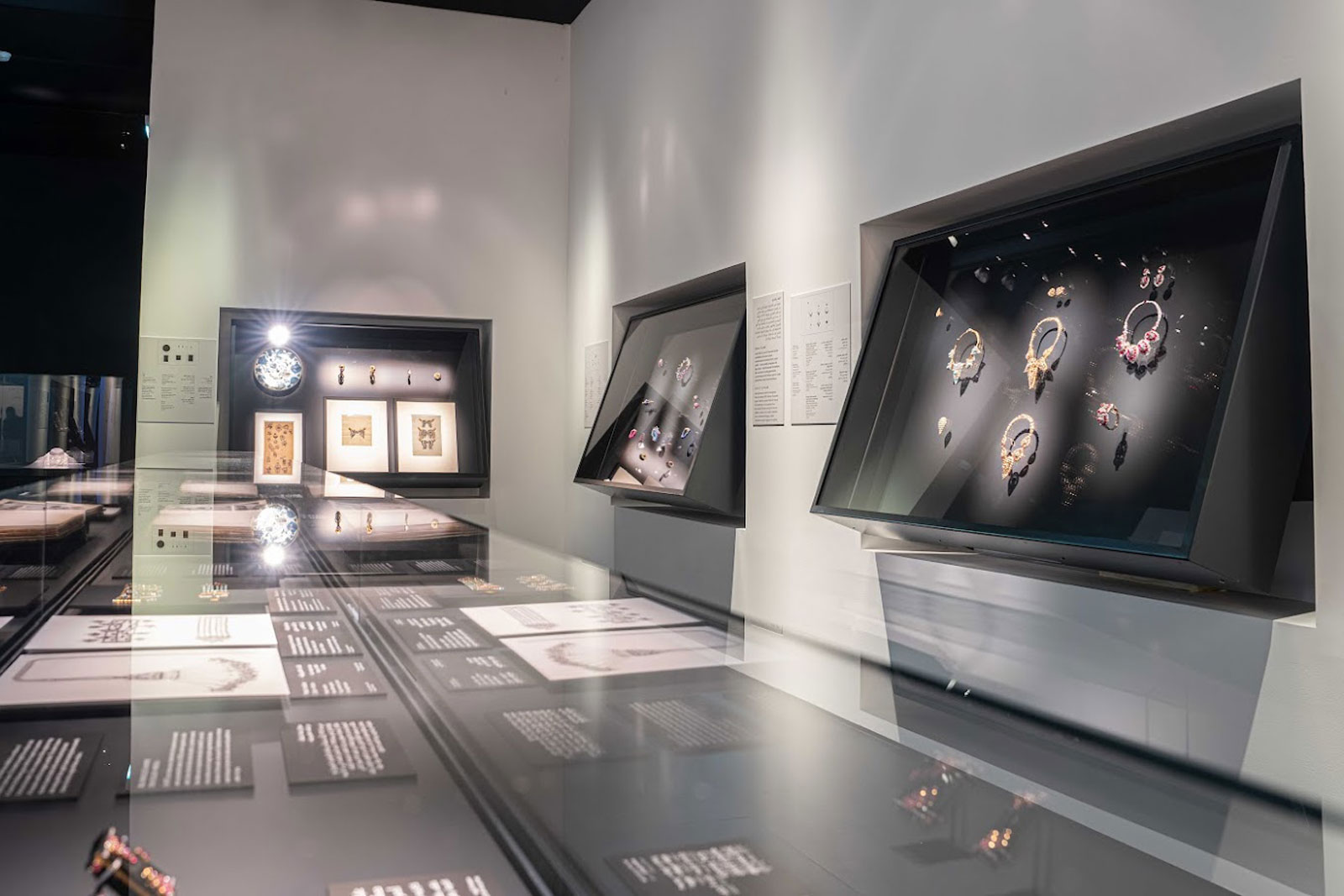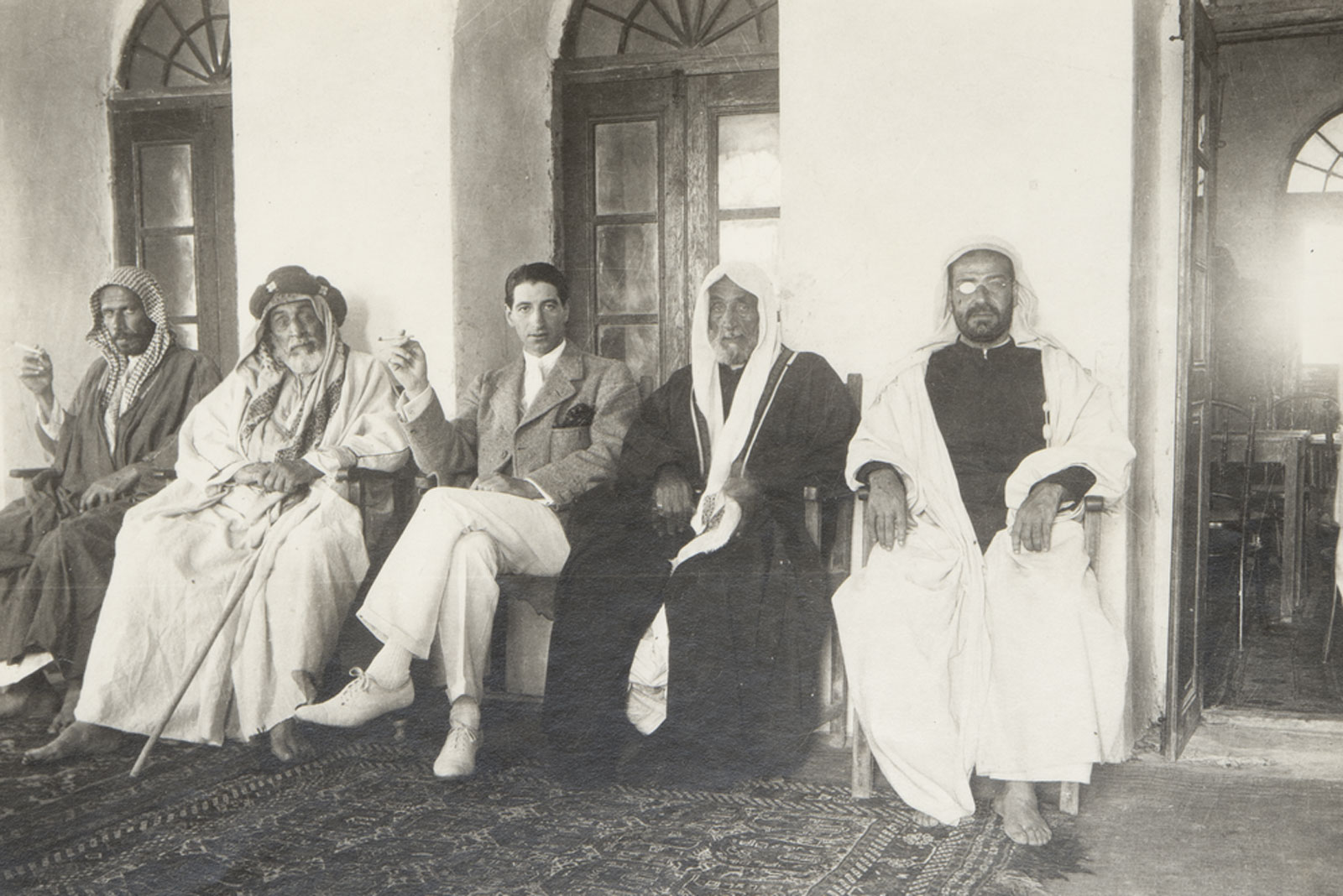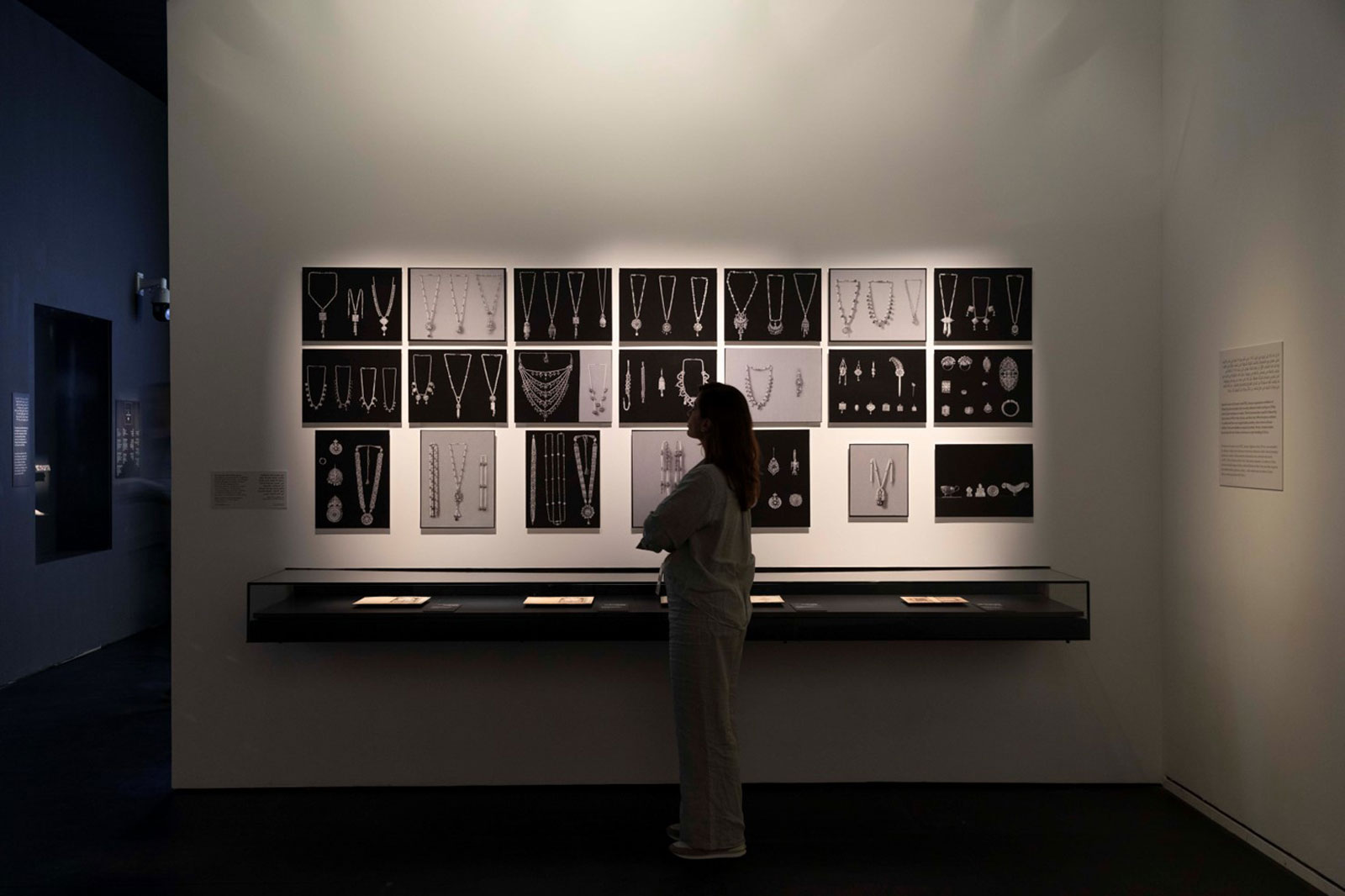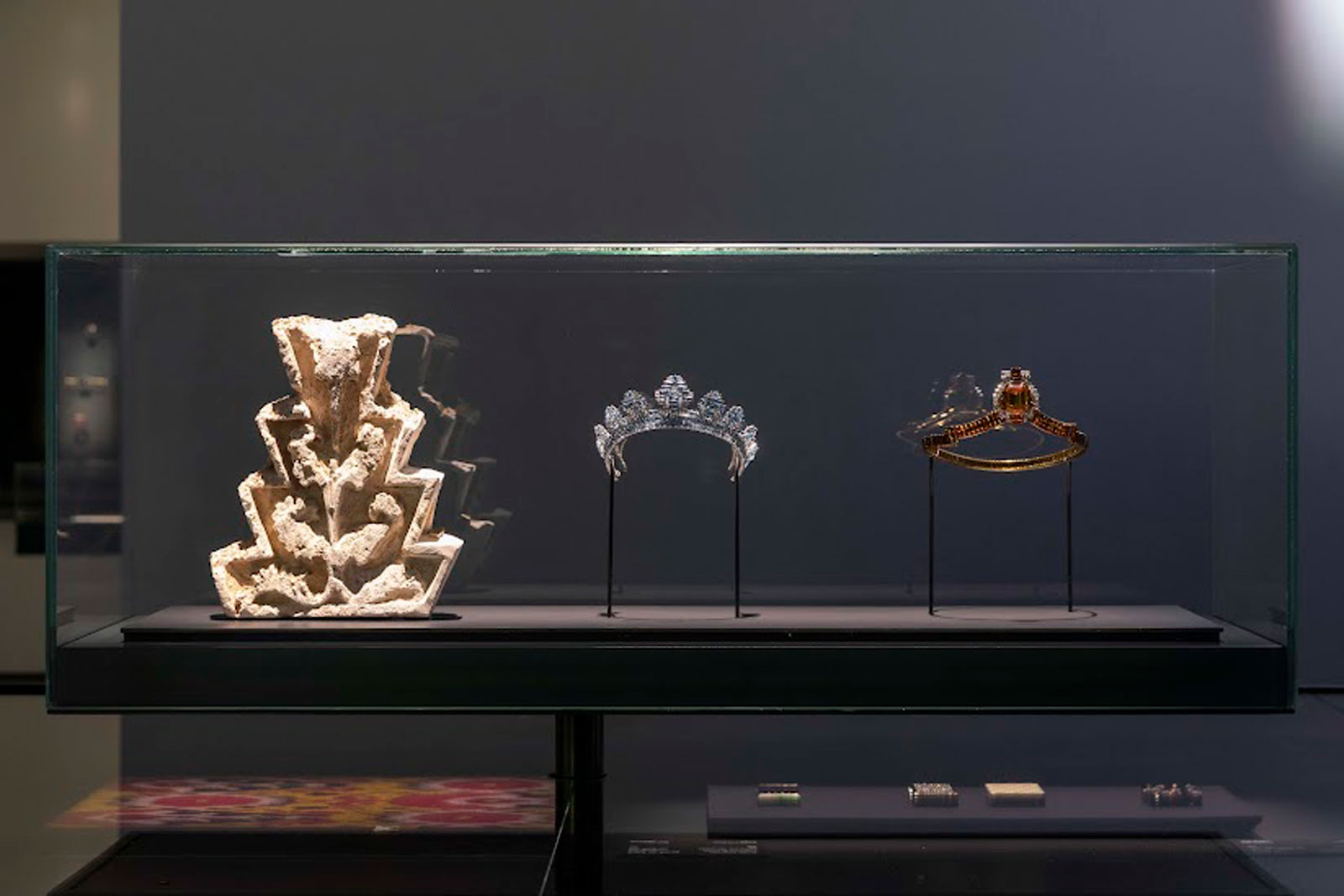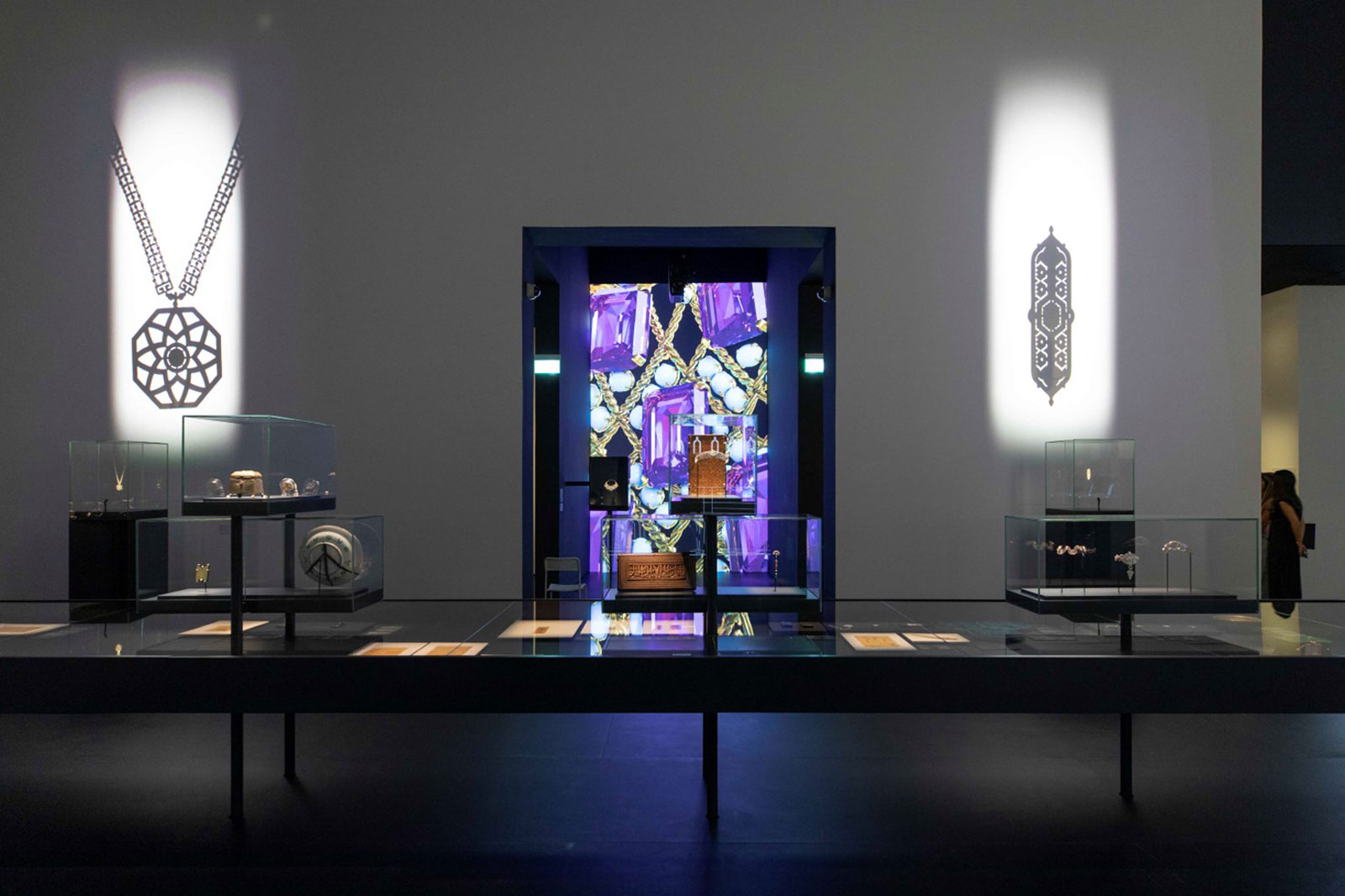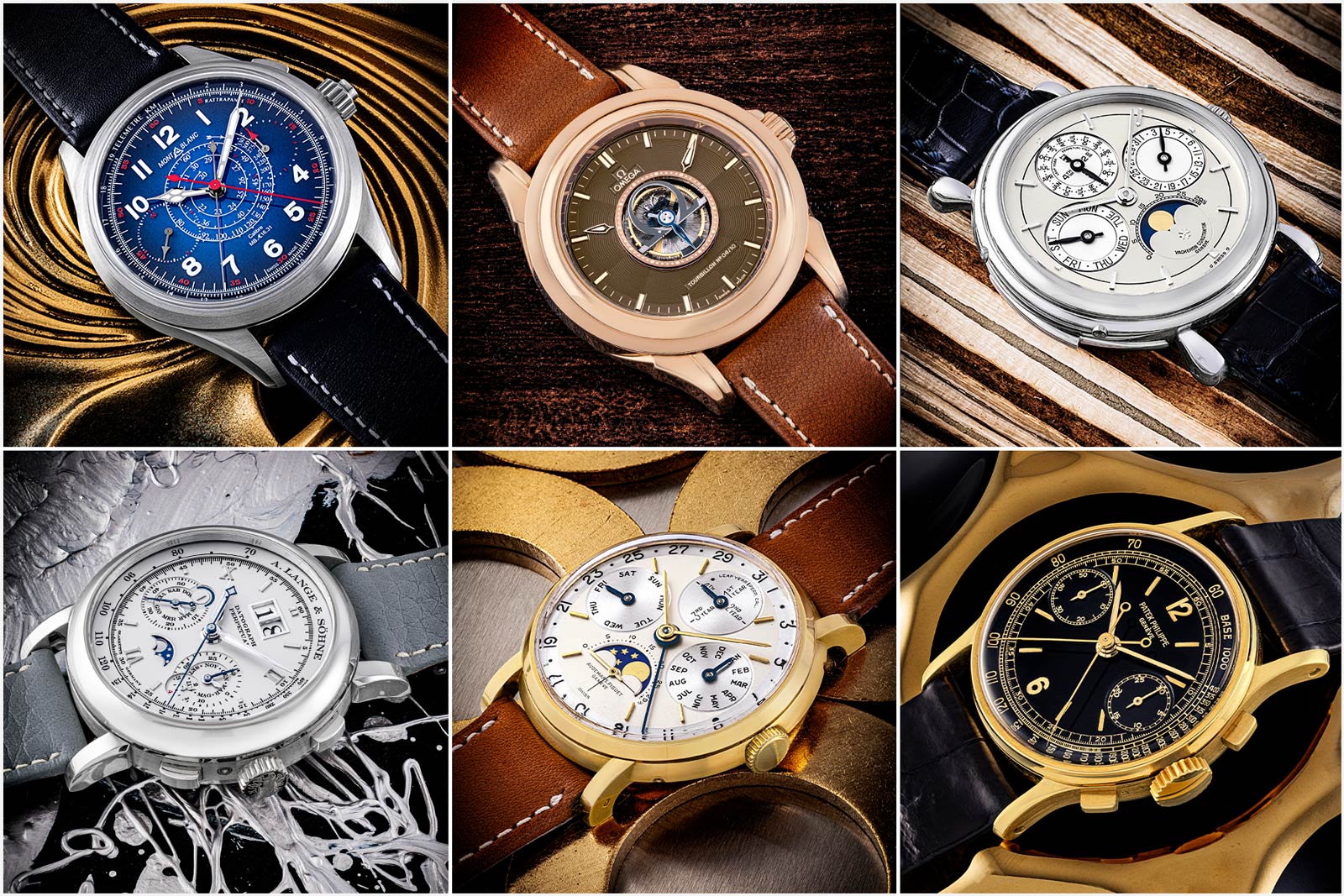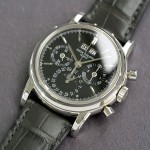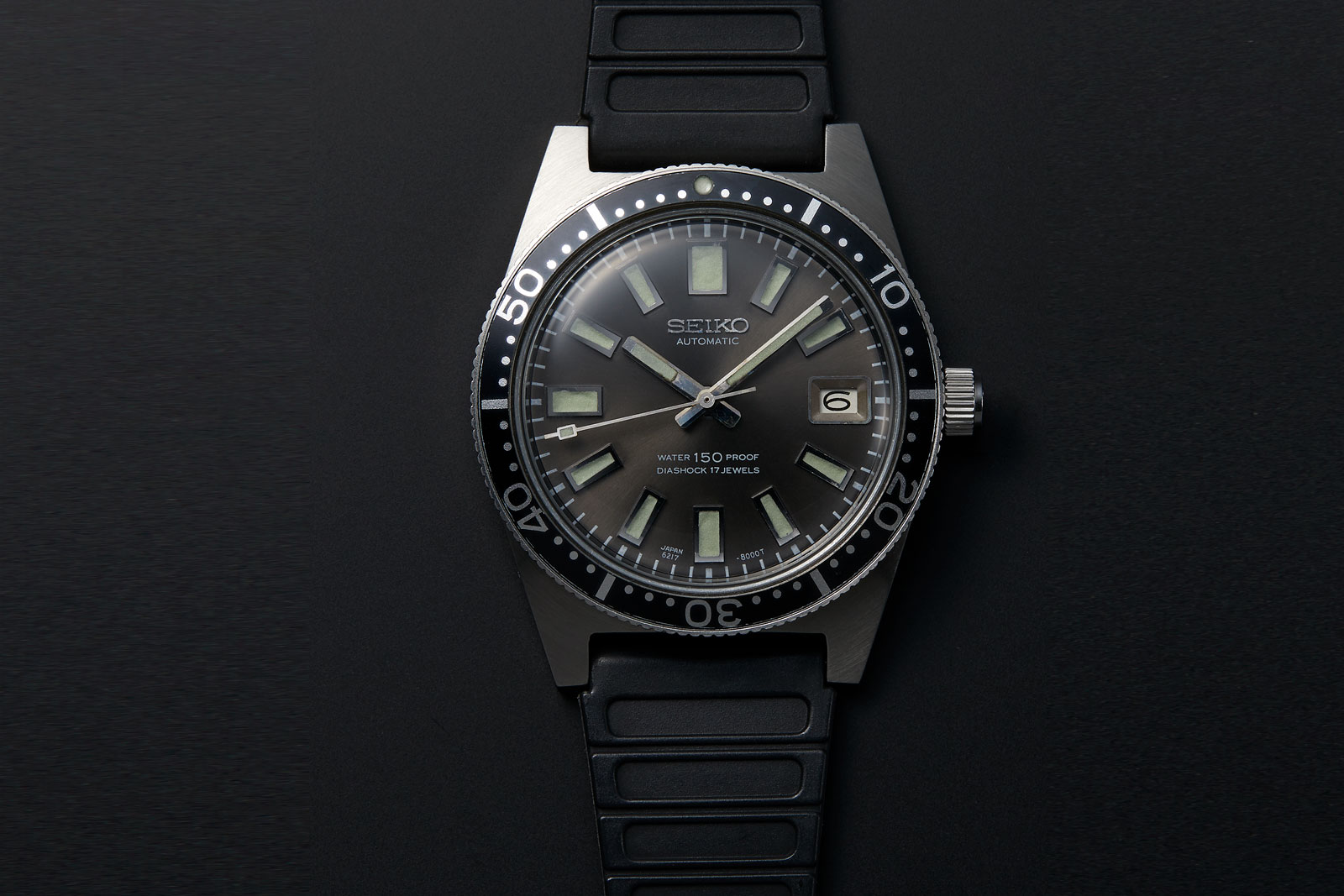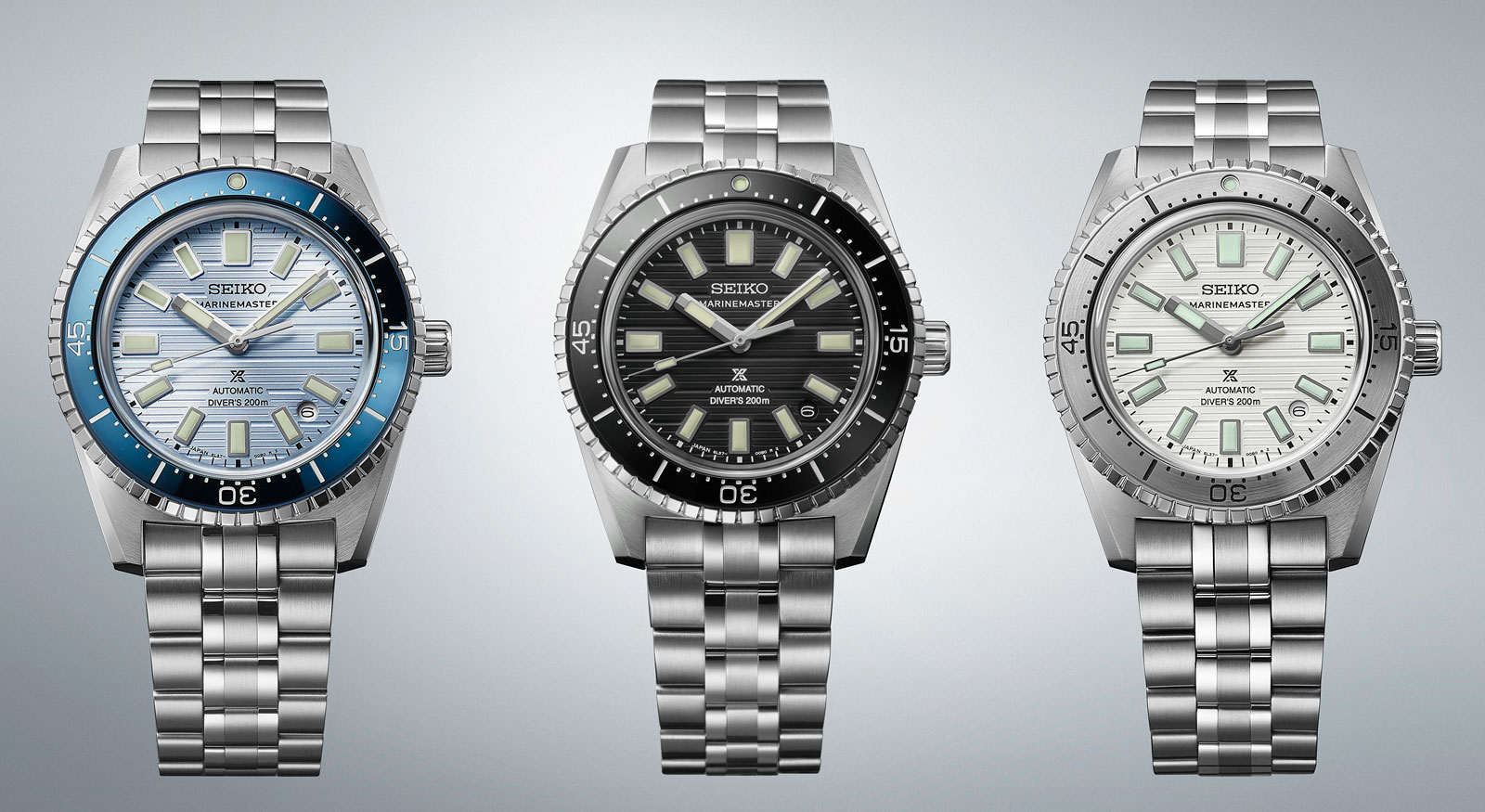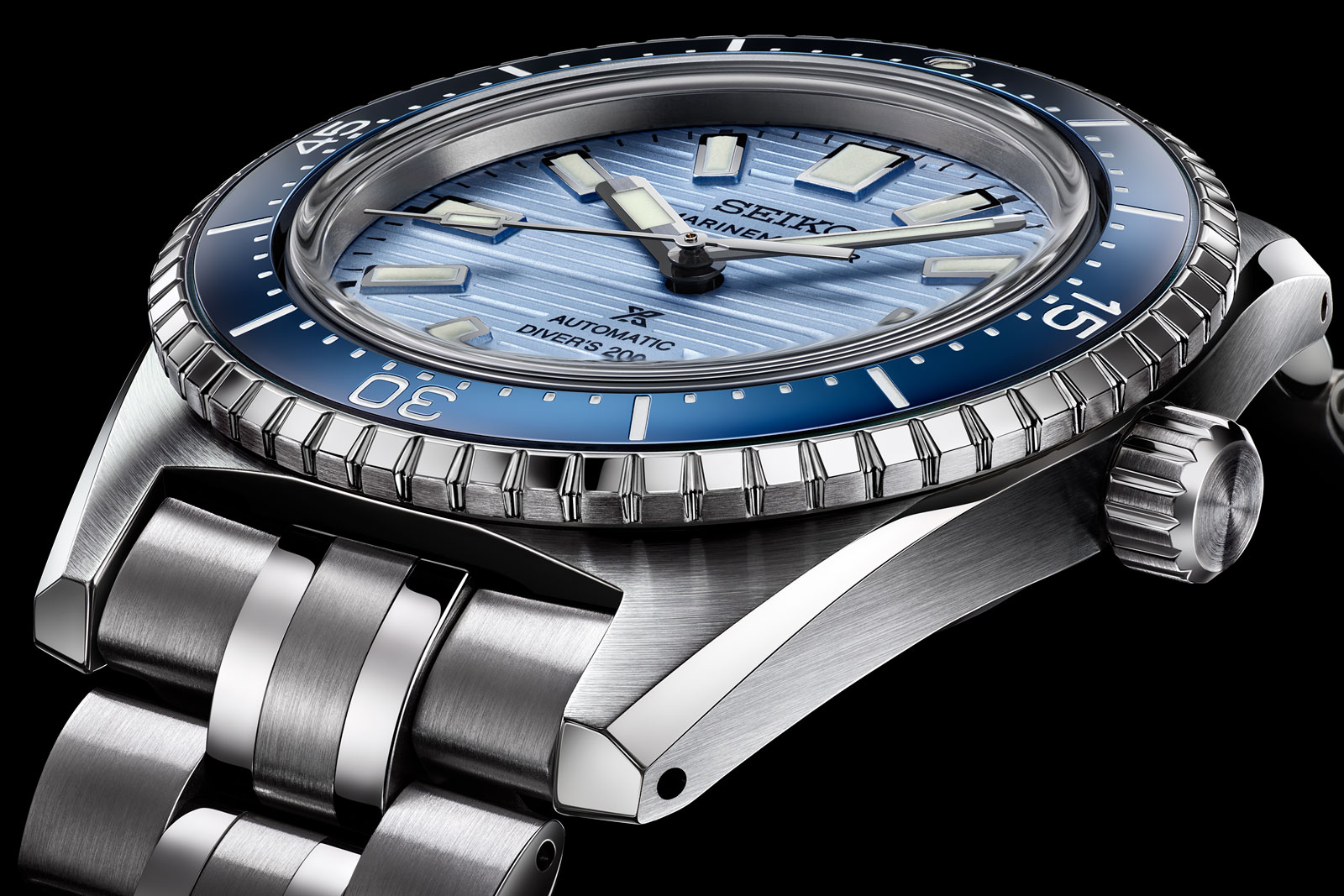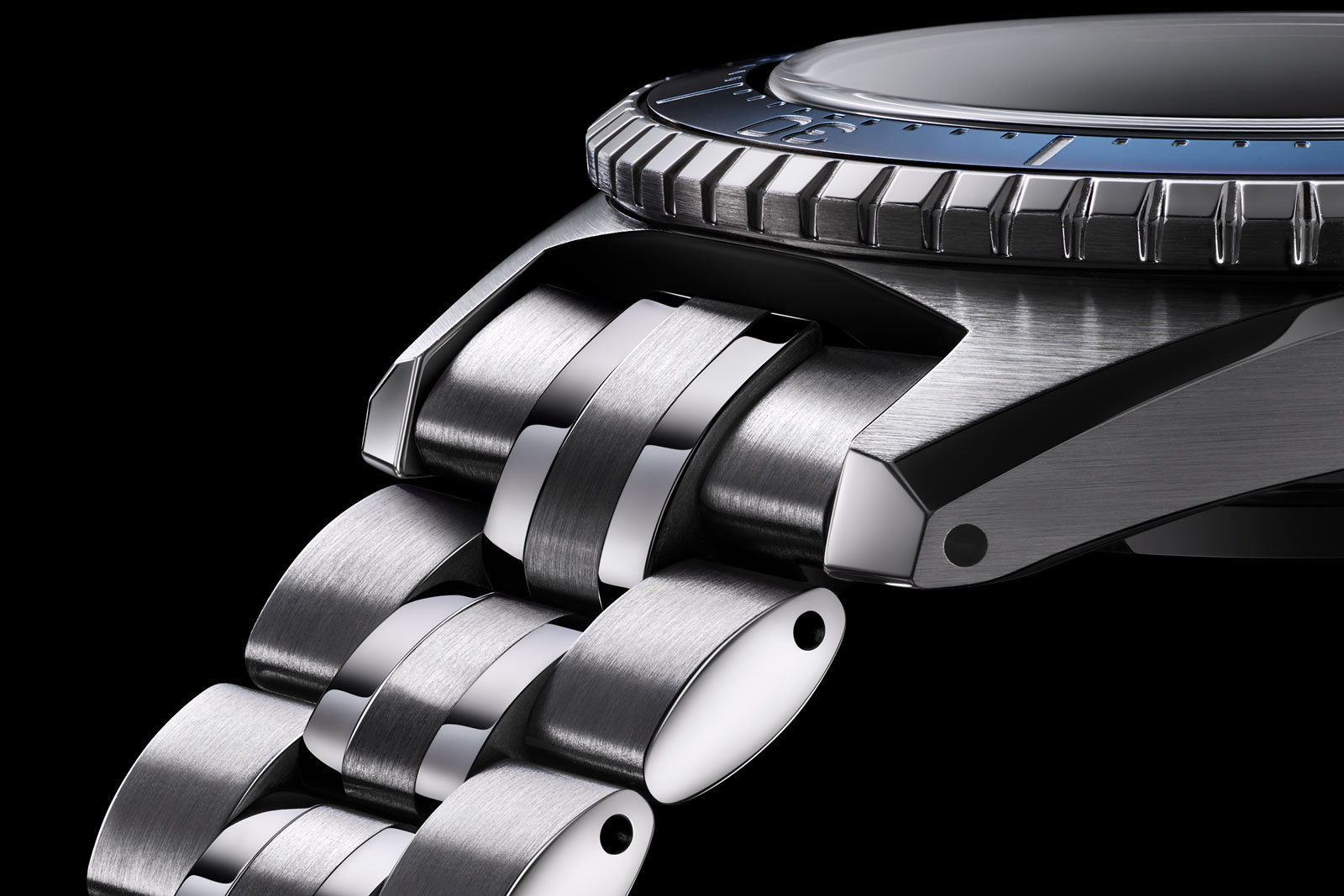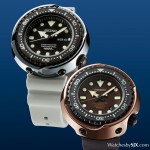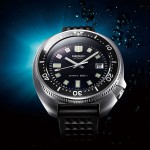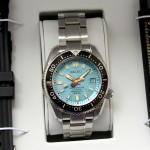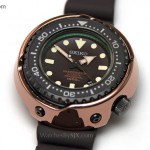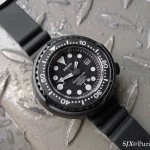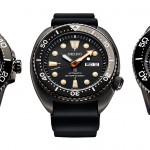After seeing the fascinating timepieces made by independent watchmakers and the artistic highlights, let us now direct your attention to the notable complications in the Christie’s sales that take place on November 26.
In this compilation, we scrutinise nine noteworthy lots. Some items, like the Audemars Piguet Perpetual Calendar ref. 5516 and the Patek Philippe Sky Moon Tourbillon, stand out with their six-figure price tags, while others might escape attention but are still deserving of a mention. Examples include the contemporary Omega De Ville Central Tourbillon or a distinctive version of Montblanc’s 1858 Split-Seconds crafted for the Only Watch charity auction.
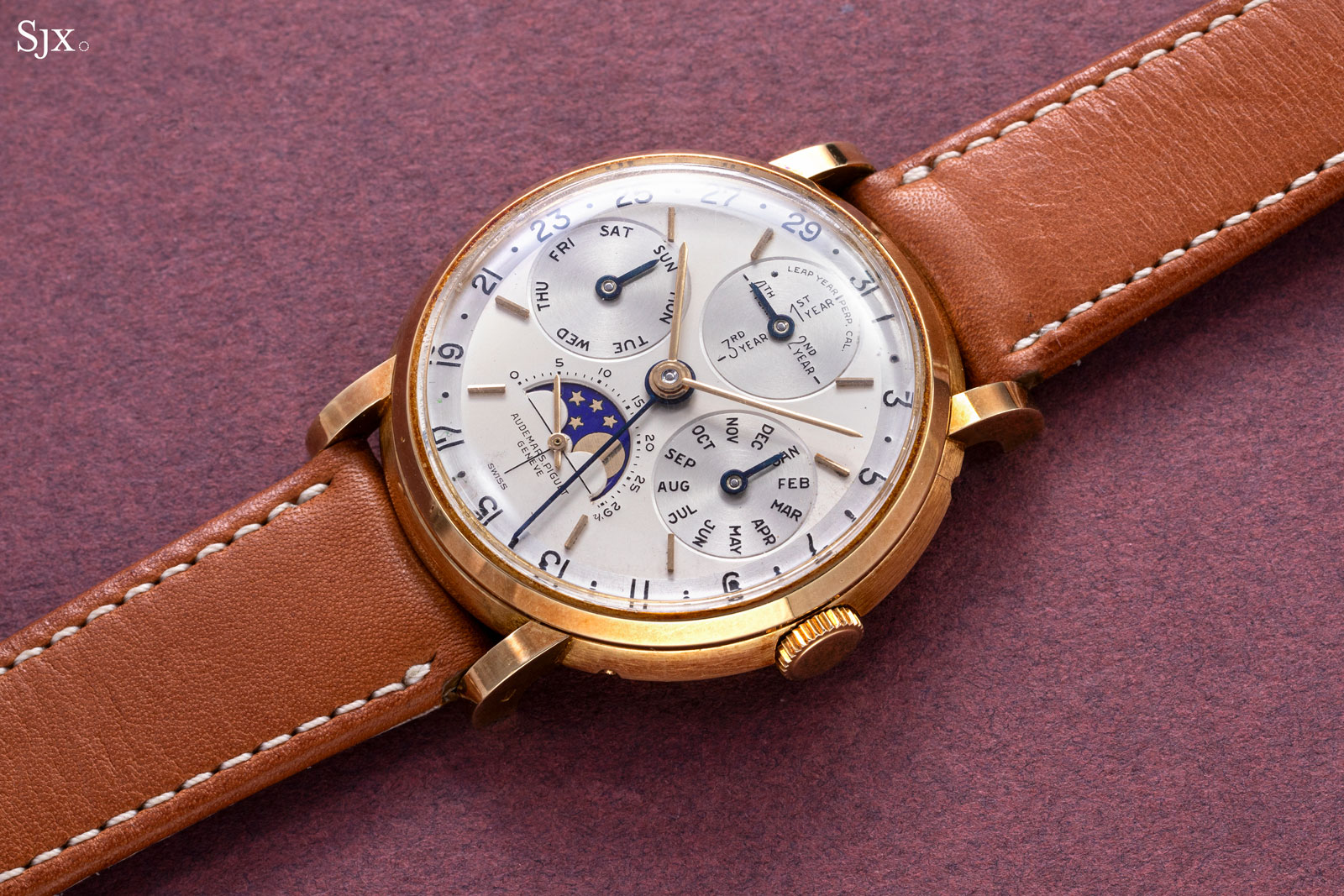
Important Watches (lots 2201-2343) begin at 1 pm on November 26 at the Hong Kong Convention and Exhibition Centre – the catalogue is available here.
It will be followed by the second session (lots 2501-2639) offering watches from the OAK Collection at 6:30 pm – see the full catalogue here.
The Vacheron Constantin Patrimony Minute Repeater Perpetual Calendar pays homage to the revered vintage reference 4261, capturing the essence of one of Vacheron Constantin’s most sought-after timepieces among collectors.
Manufactured in 200 examples across two configurations, one with a traditional dial, as seen here, and the other skeletonised, the watch stands out as a coveted item in the current collectors’ market.
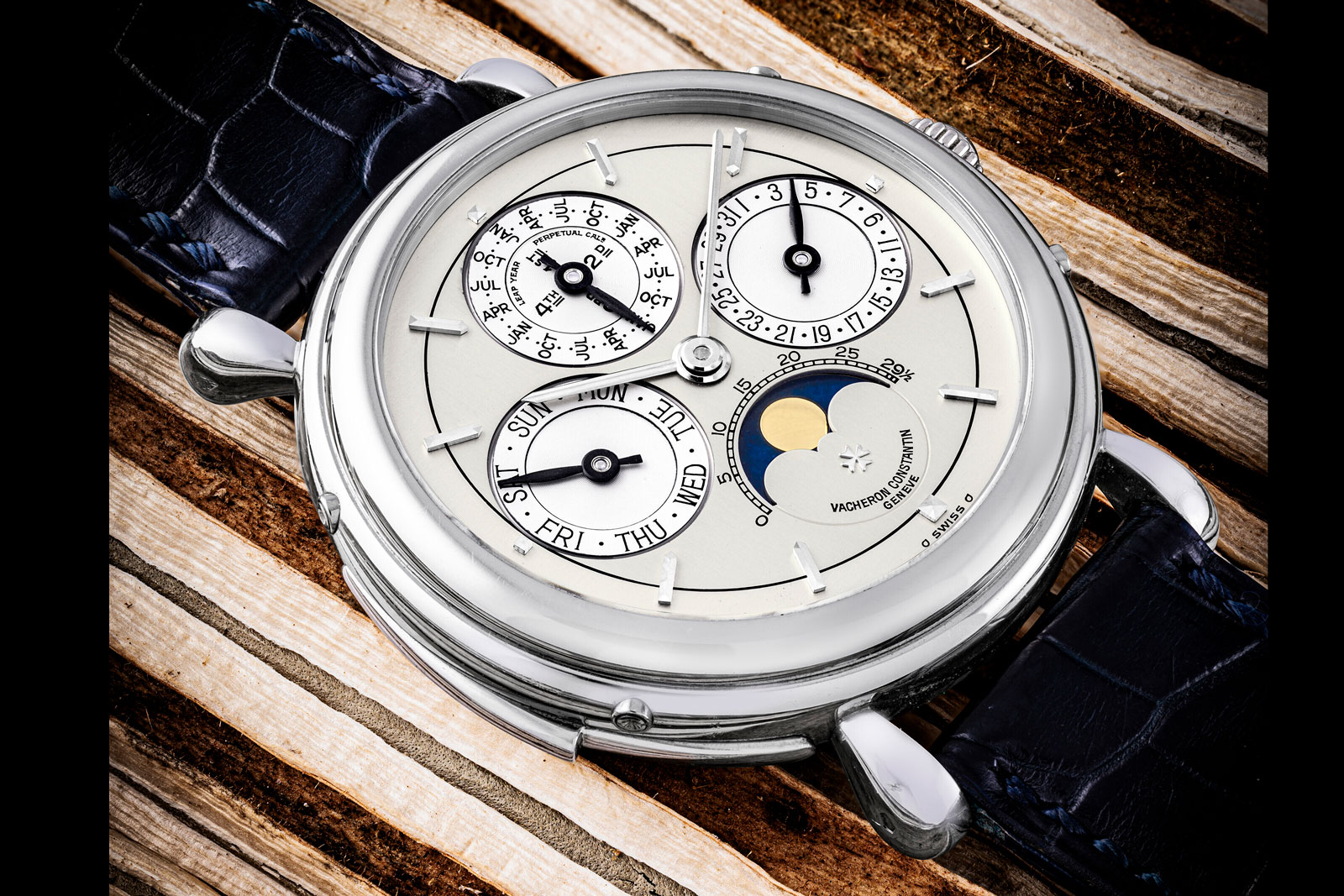
Notably, only 77 examples, including the present reference 30020, feature the upgraded perpetual calendar/moon phase module, with the majority housed in reference 30010 and reference 30030 models.
Beyond its minute repeater and perpetual calendar functionalities, this Vacheron Constantin creation achieves a remarkable technical feat by housing these complications in an ultra-thin calibre. The Calibre 1755, introduced in 1992, represents the thinnest minute repeater ever crafted by Vacheron Constantin, measuring a mere 3.28 millimetres in depth.
This movement, echoing the traditional techniques of its predecessor in reference 4261, marked a significant milestone at its inception, becoming the world’s thinnest repeater. The pairing of the minute repeater complication with a perpetual calendar in this watch was also a first for Vacheron Constantin.
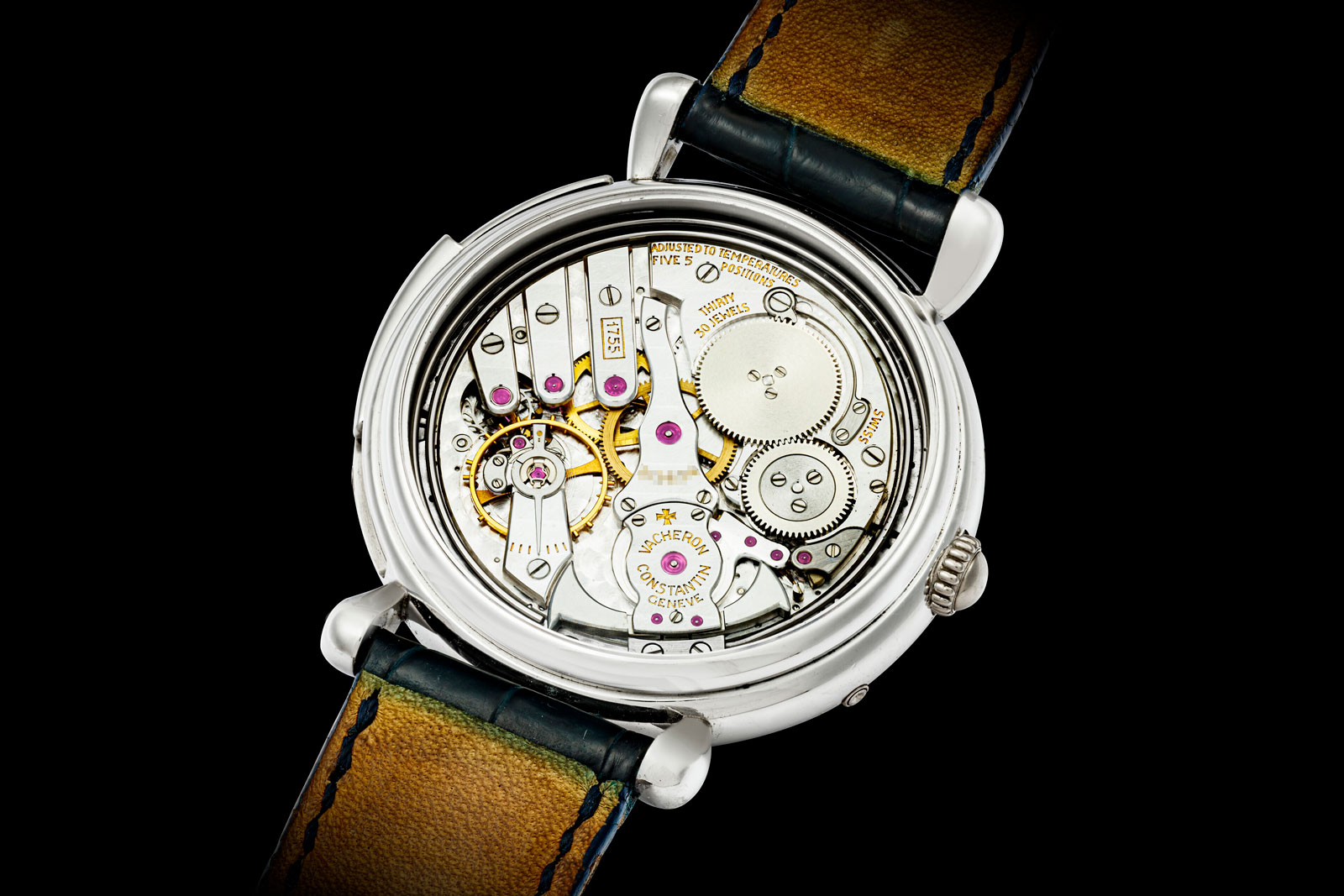
The meticulously designed dial of the reference 30020 contributes to its visual allure, employing different surfaces with brushed finishes on the inner and outer sections. The dial exhibits a sophisticated interplay of textures, with sub-dials featuring concentric circular patterns that provide visual differentiation, enhancing aesthetic appeal and legibility.
The sub-dial hands, crafted from oxidised gold to appear blackened, further contribute to the watch’s distinctive and refined character. The case design, mirroring the elegant stepped profile of its vintage predecessor and featuring distinct teardrop lugs, underscores this timepiece’s timeless and sophisticated aesthetics, measuring 36 mm in diameter and slightly under 10 mm in height.
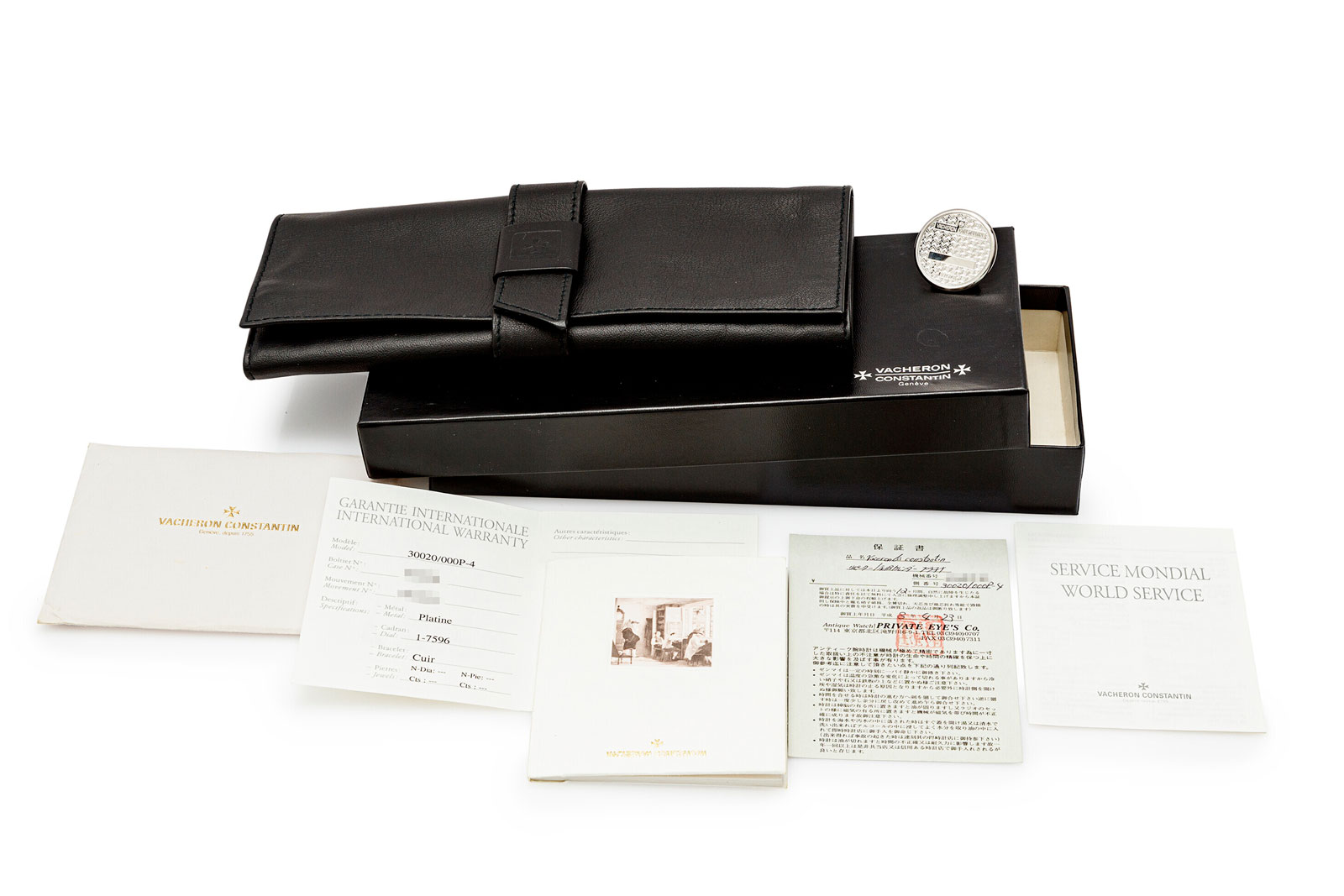
Offered as a full set, the ref. 30020 carries an estimate of HK$1-2 million, or about US$128,200-256,400.
For more, view the lot details here.
The Patek Philippe Reference 5002 Sky Moon Tourbillon holds the distinction of being the first double-face wristwatch in the history of the Geneva-based manufacturer. Produced from 2001 until 2012 and followed by the updated Reference 6002, it has inspired subsequent references, including the celestials and the grandmaster chime. Drawing inspiration from the Star Caliber 2000 pocket watch, Patek Philippe achieved the feat of miniaturising the sky chart for the Sky Moon Tourbillon, establishing it as a modern masterpiece with an estimated annual output of approximately ten watches and earning its place as one of the most significant timepieces of its era.
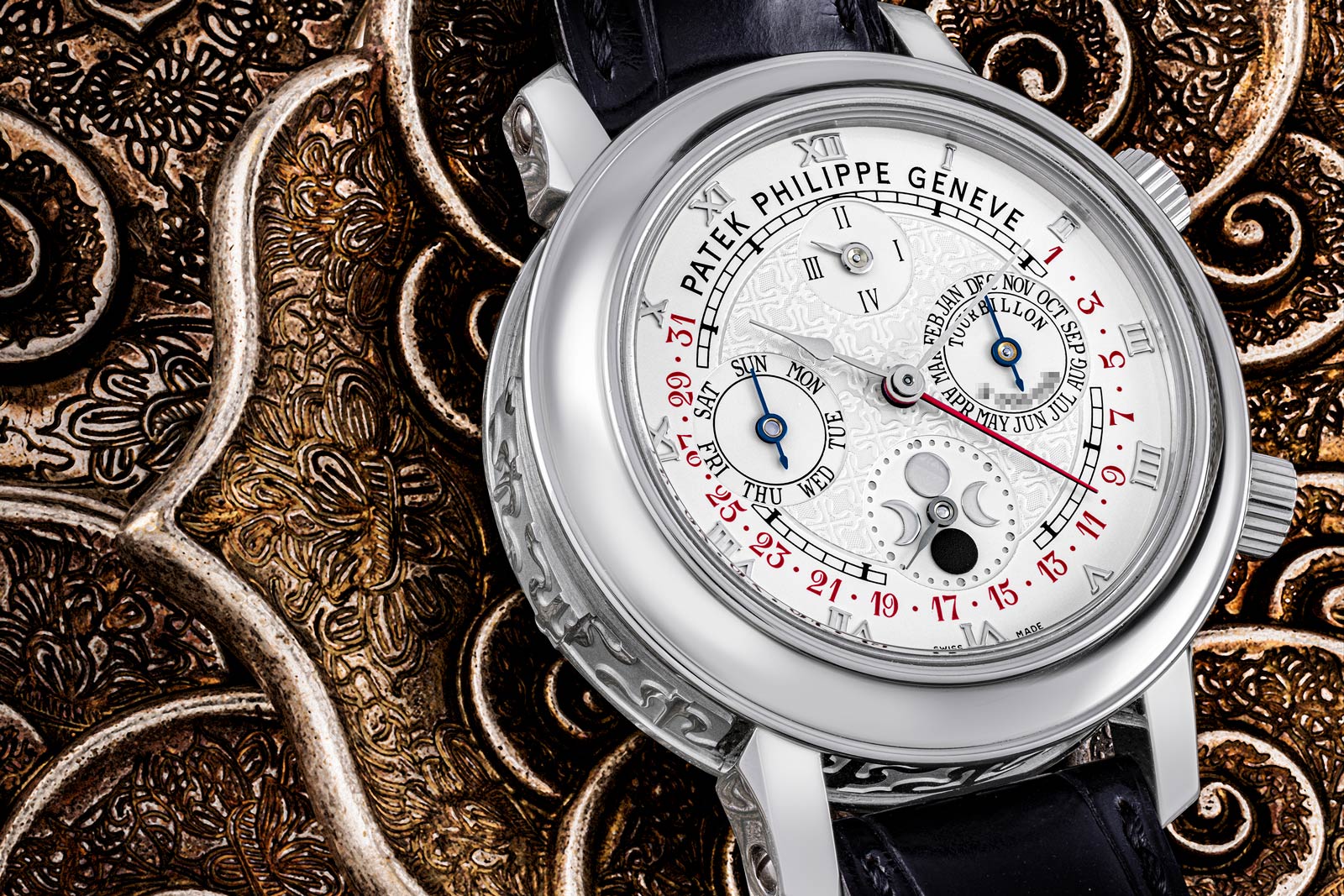
The dial side of this watch encompasses the mean solar time and perpetual calendar, while the back reveals a nocturnal sky map, moon phases, and sidereal time. A transparent crystal disk on the back, rotating once per sidereal day, forms the basis for the sidereal time display, showcasing the angular progression of the stars and the moon from the Northern hemisphere.
This intricate design allows the user to observe the celestial chart of Earth’s satellite, including the meridian passage of Sirius, concealed beneath the bezel in a manner reminiscent of mystery clocks.
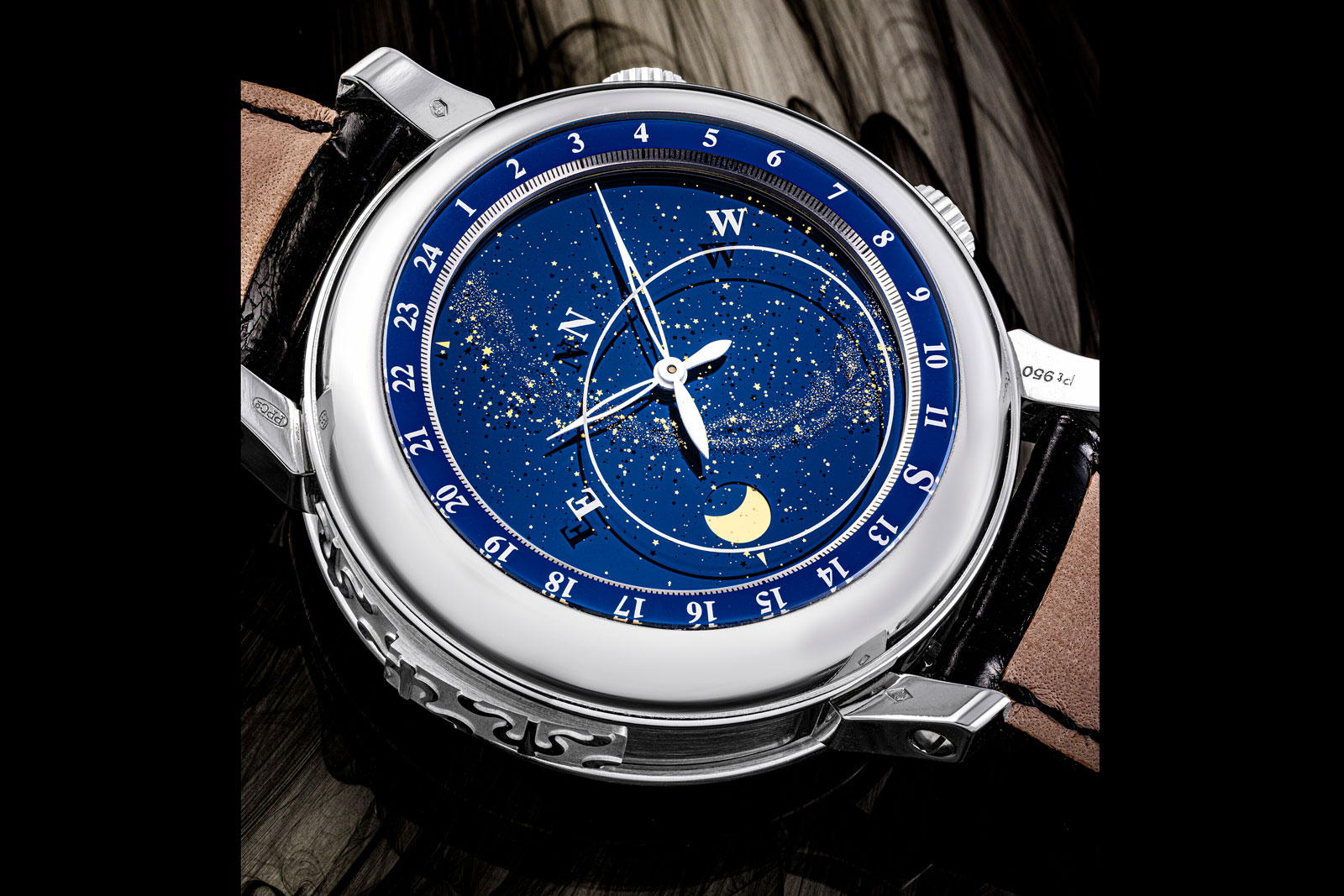
The Sky Moon Tourbillon, powered by the Caliber R TO 27 QR SID LU CL, bears the Geneva hallmark and COSC chronometer certificate. This exceptional movement incorporates twelve complications and 686 hand-finished and assembled components, including a perpetual calendar with retrograde date, weekday, month, leap year cycle, age and angular motion of the moon, minute repeater on cathedral gongs developed in collaboration with the Swiss Federal Institute of Technology, a tourbillon composed of 69 individual steel parts, and a map of the sky indicating sidereal or “star” time and the phases of the moon.
The 42.8mm case, adorned with a repeating Calatrava cross motif, houses two crowns – one at four o’clock for setting the primary dial and another at two o’clock for adjusting the celestial dial.
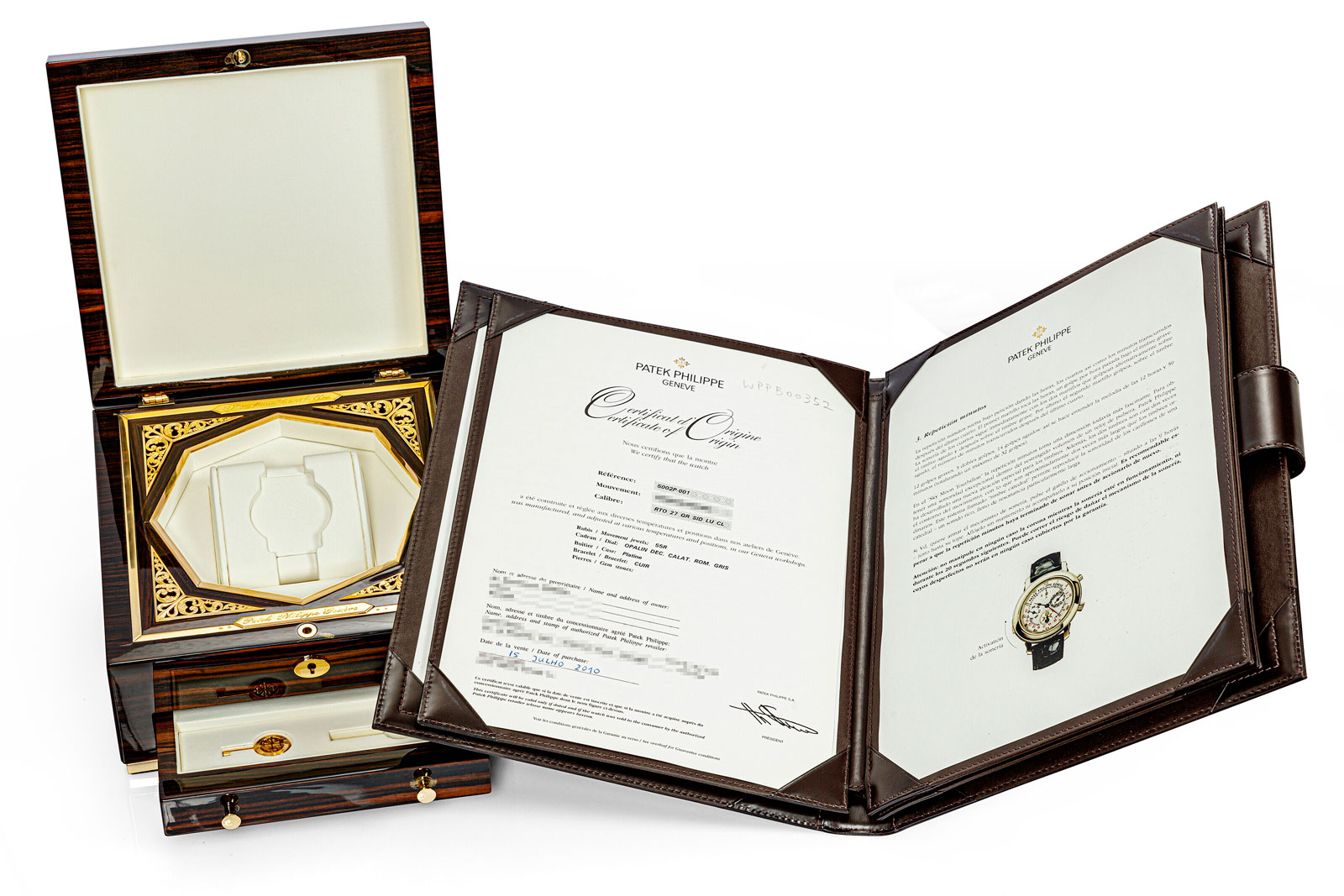
Offered as a full set, the Sky Moon Tourbillon carries an estimate of HK$10-20 million, or about US$1.28-2.56 million.
For more, view the catalogue entry.
The Omega De Ville Central Tourbillon, presented in a luxurious pink gold case measuring 39 mm, is a testament to the brand’s horological innovation and aesthetic finesse. Initially launched in 1994, this timepiece inaugurated the calibre 1170, introducing a centrally located flying tourbillon – a departure from convention as the tourbillon was unusually placed in the centre of the watch.
Notably, this design also marked the integration of automatic winding into this type of tourbillon, showcasing Omega’s commitment to pushing the boundaries of watchmaking. The watch featured two sapphire crystal discs, each etched with a hand, rotating around the centre, creating a captivating mystery watch effect.
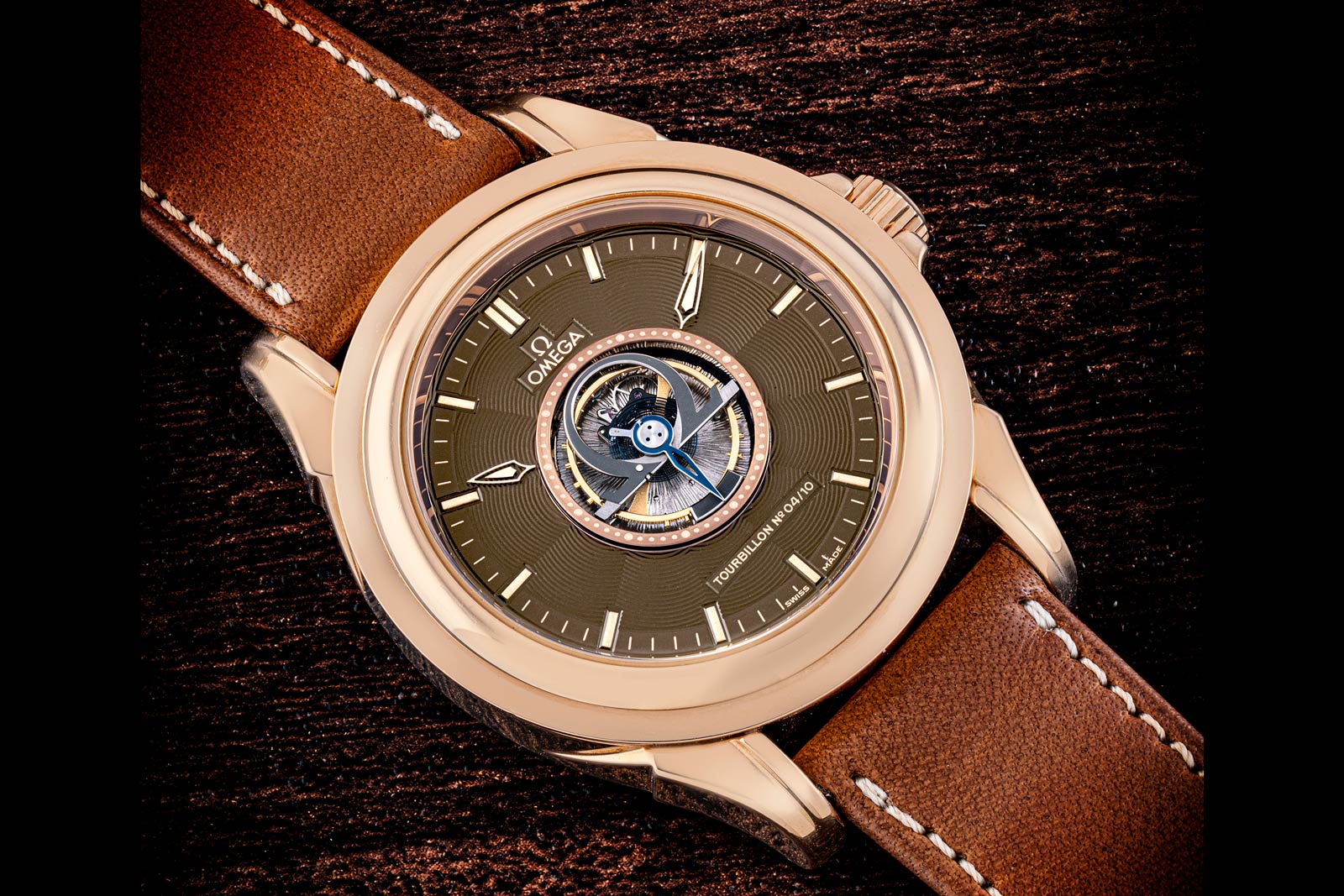
In 2002, Omega enhanced the Central Tourbillon with a 45-hour power reserve, releasing very few pieces. The upgraded version, featuring the improved calibre 2600 chronometer movement, exemplifies the brand’s dedication to precision and performance.
The Central Tourbillon was crafted in various precious metals, including 18k yellow gold, pink gold, white gold, and platinum, offering a range of choices to collectors. The present pink gold example, numbered 4 in a limited series of just ten pieces, encapsulates the rarity and exclusivity of this timepiece.
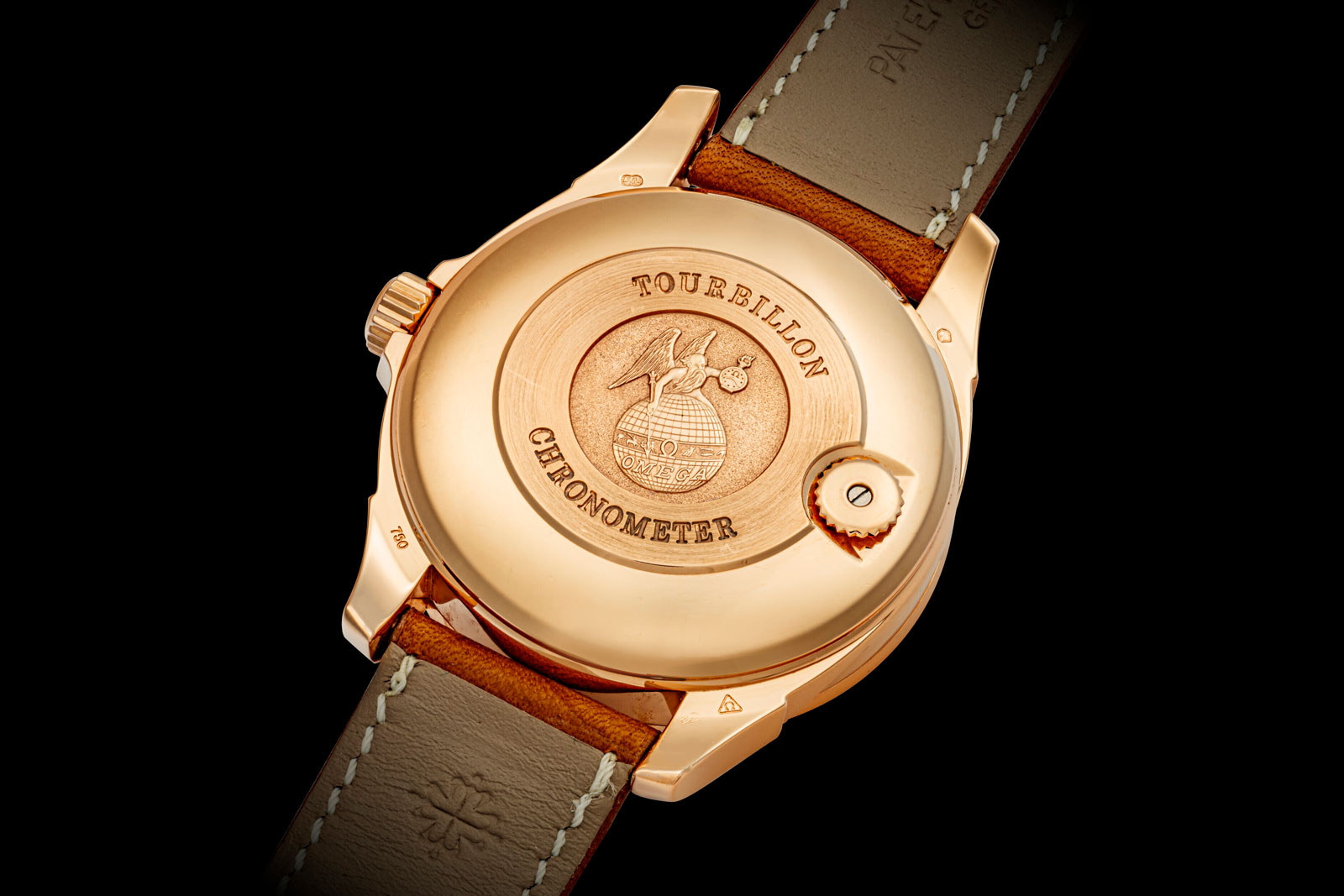
The 39 mm case, a modern interpretation of fine wristwatches from the 1950s, exudes timeless elegance. The solid gold case back is conservatively decorated, and is also where the time-setting crown is positioned.
The lot is offered with an 18k pink gold Omega deployant clasp, its chronometer certificate and other accessories. It carries an estimate of HK$200,000-400,000, or about US$25,600-51,300.
For more, view lot details here.
The A. Lange & Söhne Datograph Perpetual combines a chronograph with a perpetual calendar complication, recognised for its technical precision and classic design. Powered by the in-house Caliber L952.1 movement, it seamlessly integrates multiple complications, ensuring accurate date tracking over four years and enhancing functional capabilities with a precise jumping minute counter and flyback function.
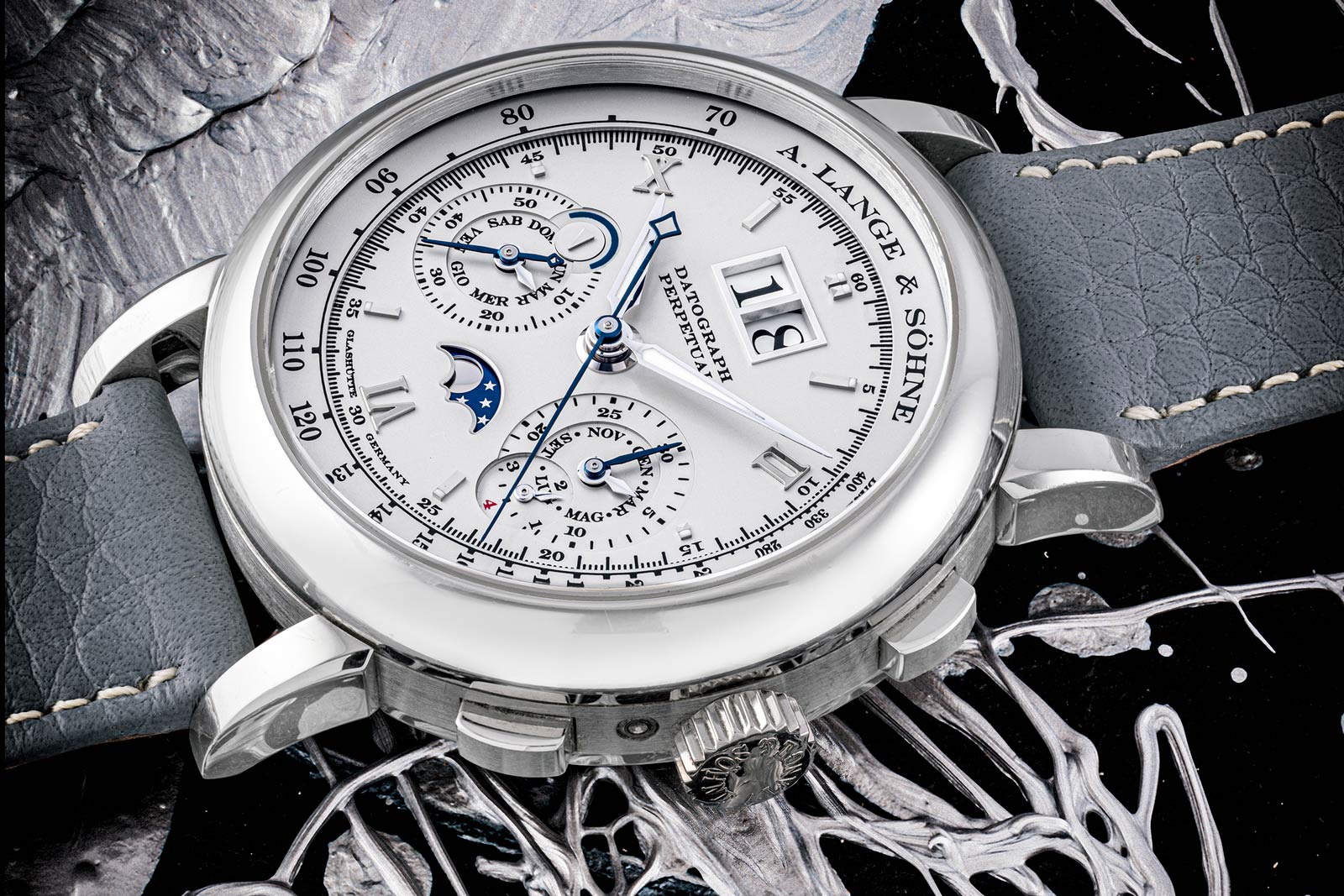
Introduced during the SIHH show in 2006, the Datograph Perpetual is part of the Saxonia watch family launched in 1994, marking the rebirth of the A. Lange & Söhne brand. The timepiece, encased in platinum, stands out for its size and mechanics, offering comfortable wear on the wrist. The sapphire back reveals the magnificent Calibre L952.1, showcasing the three-dimensional construction and intricate hand-finished components. Additionally, the platinum case features a safety pusher at 10 o’clock for advancing calendar indications, contributing to the timepiece’s singularity.
Rare in the market, the reference 410.025 had a short production span of 5 years, making it a sought-after piece. Subsequently, a second-generation Datograph Perpetual was introduced in pink and white gold, further enhancing the rarity and significance of this platinum-cased timepiece in any collection.
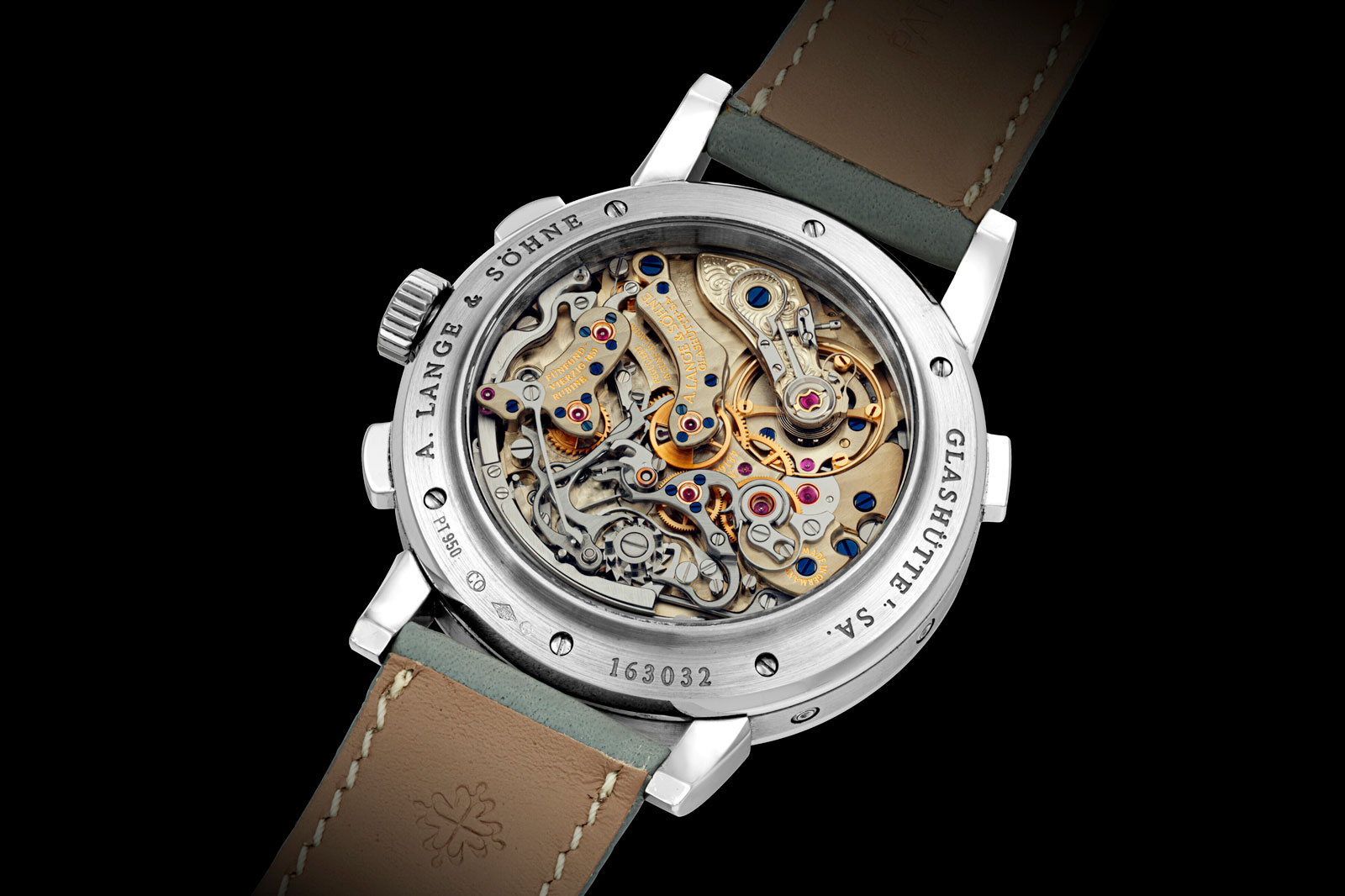
Offered as a full set, including an OAK certificate, the Datograph carries an estimate of HK$480,000-950,000, or about US$61,500-121,800.
Full lot details here.
The Vacheron Constantin Malte Perpetual Calendar Chronograph Excellence Platine Ref. 47212 is a quintessential example of haute horlogerie. Introduced in late 2007 as part of the Excellence Platine collection, this limited edition comprises just 50 timepieces, underlining its exclusivity.
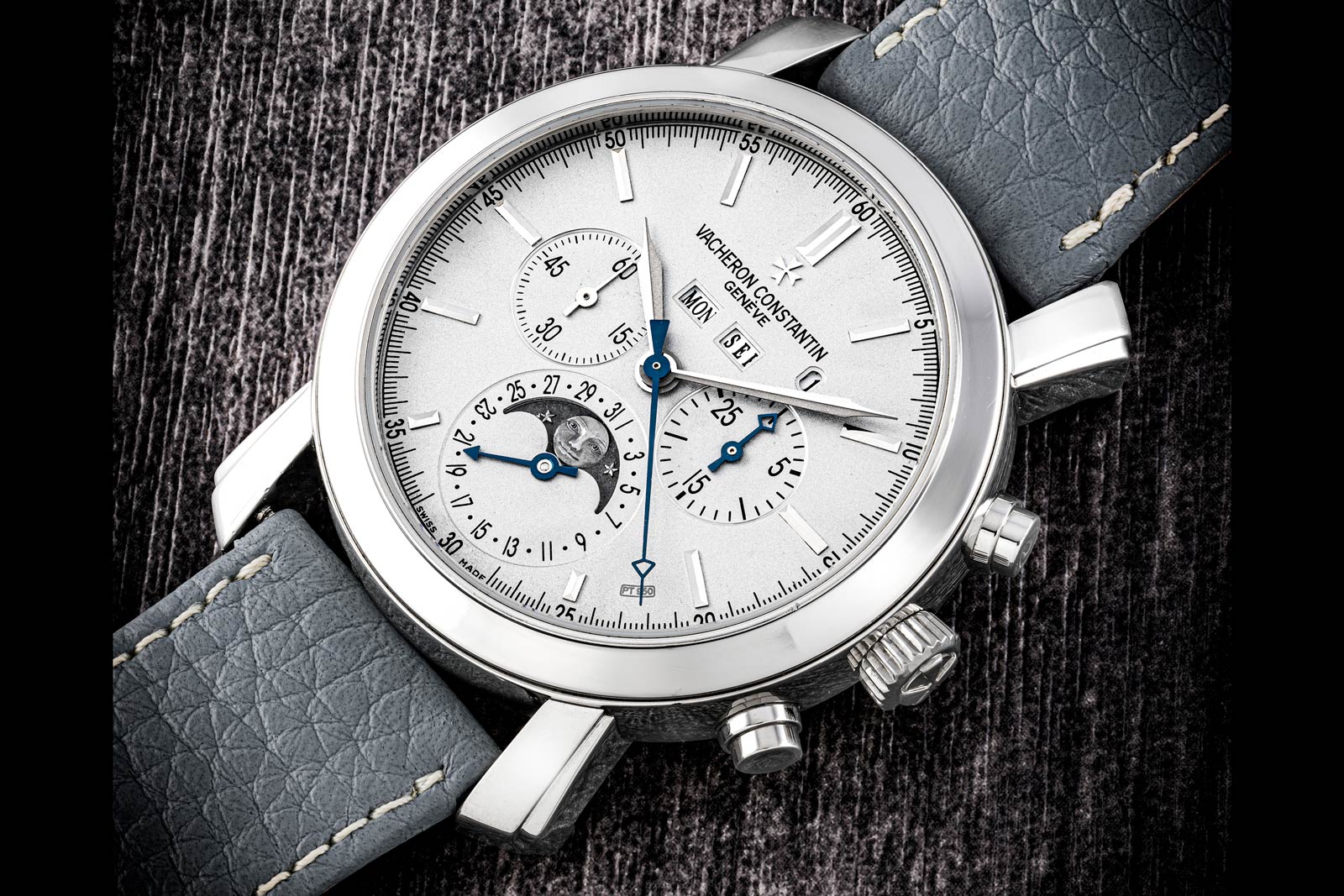
Housed in a 42 mm platinum case, the watch exhibits meticulous attention to detail, from the stepped lugs to the platinum dial’s subtle intricacies. The dial features a harmonious composition of baton indices and a monochromatic hand-engraved moon-phase indicator. A mix of white gold and blued steel, the hands create both a contrast and continuity to the dial design. Powering the ref. 47212 is the Calibre 1141 QPR, a manually-wound movement based on a reliable Lemania ébauche, consisting of 21 jewels oscillating at 18,000 vibrations per hour, delivering a commendable 48-hour power reserve.
The Malte Perpetual Calendar Chronograph Excellence Platine Ref. 47212 is a collector’s delight, blending design and impeccable craftsmanship. Its complications, finish and limited production status establish it as a highly sought-after item among discerning watch enthusiasts.
It is being offered as a full set and carries an estimate of HK$350,000-700,000, or about US$44,900-89,700.
Full lot details here.
Montblanc’s unique piece for Only Watch in 2019 created the 1858 Split Second Chronograph Only Watch 2019, a timepiece generously donated to charity. Featuring a titanium case and a distinctive blue agate dial, the watch is a reinterpretation of a historical Minerva military mono-pusher chronograph from the 1930s. The blue agate dial, with a graduated colour darkening towards the edges, creates a visually striking contrast with the red accents and white lume.
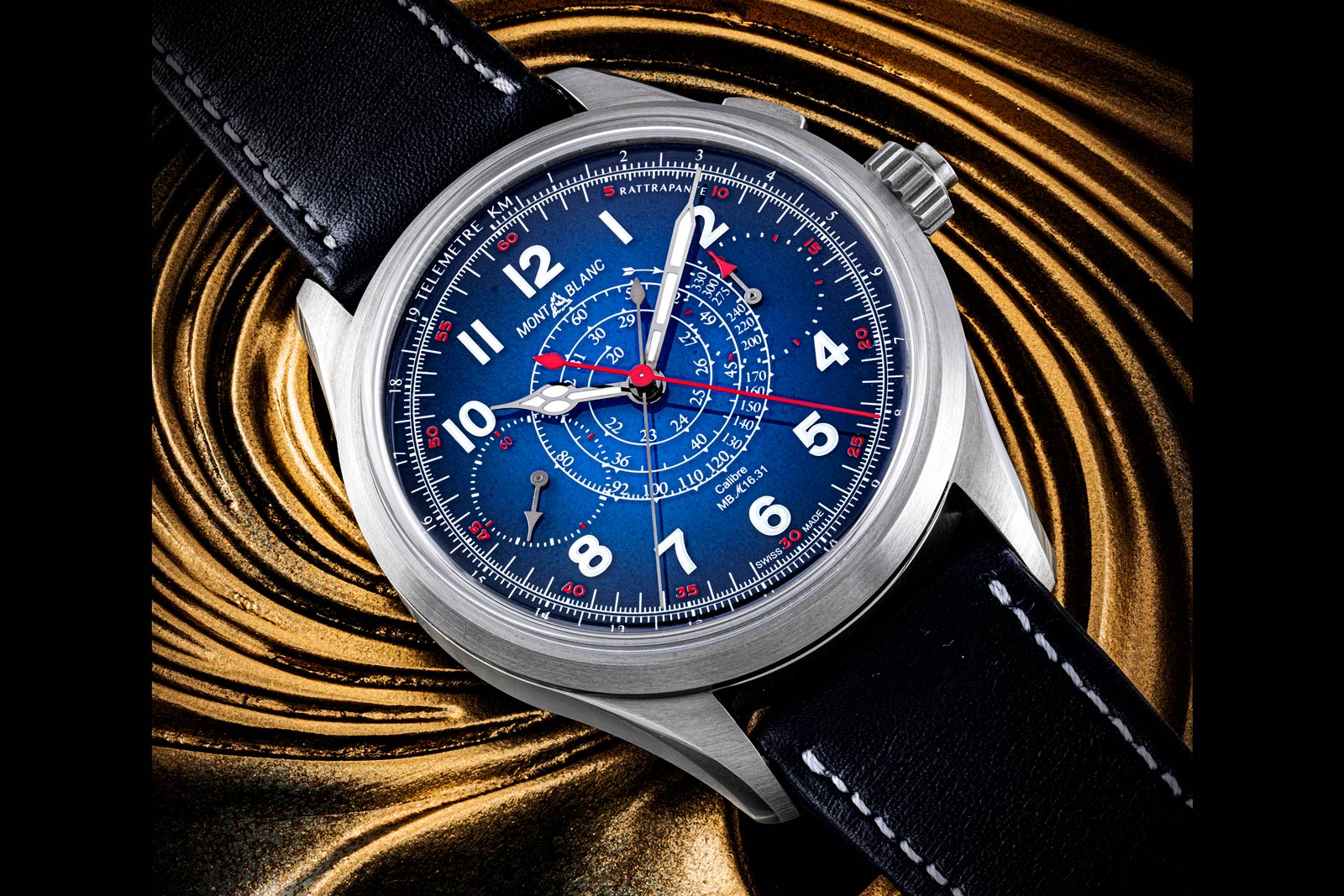
The unique example stands out with its titanium case crafted from Grade 5 alloy, exhibiting polished accents over brushed surfaces. Despite its substantial dimensions, including a 44 mm diameter and 14.55 mm thickness due to the sizeable pocket watch movement, the titanium case offers a unique aesthetic. The sapphire case back reveals the hand-wound and hand-finished MB M16.31 movement, featuring a split-second mechanism and a commendable 50-hour power reserve.
The movement is an evolution of the MB M16.29, drawing inspiration from the original Minerva calibre 17.29 from the 1930s, and showcases high levels of craftsmanship with rhodium-plated maillechort components, including anglages, perlage, geneva stripes, and polished bevels.
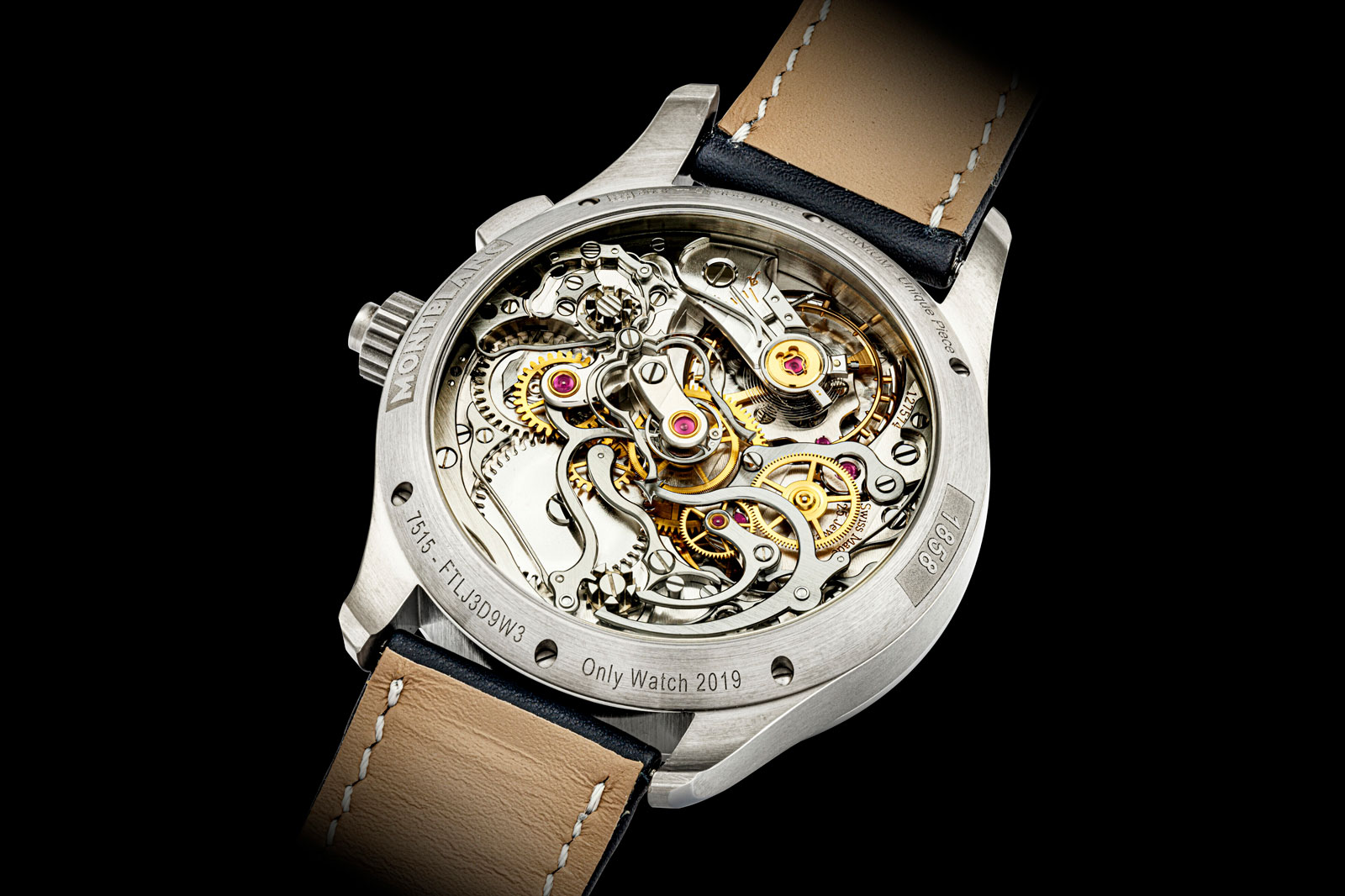
Noteworthy features include chronograph sub-counters, a base-1000 tachymeter snail-track, and three additional scales for minutes, seconds, and telemeter, enhancing functionality and vintage aesthetic. This unique piece was auctioned at Christie’s Geneva on November 19, 2019, with a small estimate of CHF42,000-48,000, but was eventually sold for CHF100,000.
The 1858 Split Seconds Chronograph is offered as a full set. It carries an estimate of HK$650,000-1.3 million, or about US$83,300-166,600.
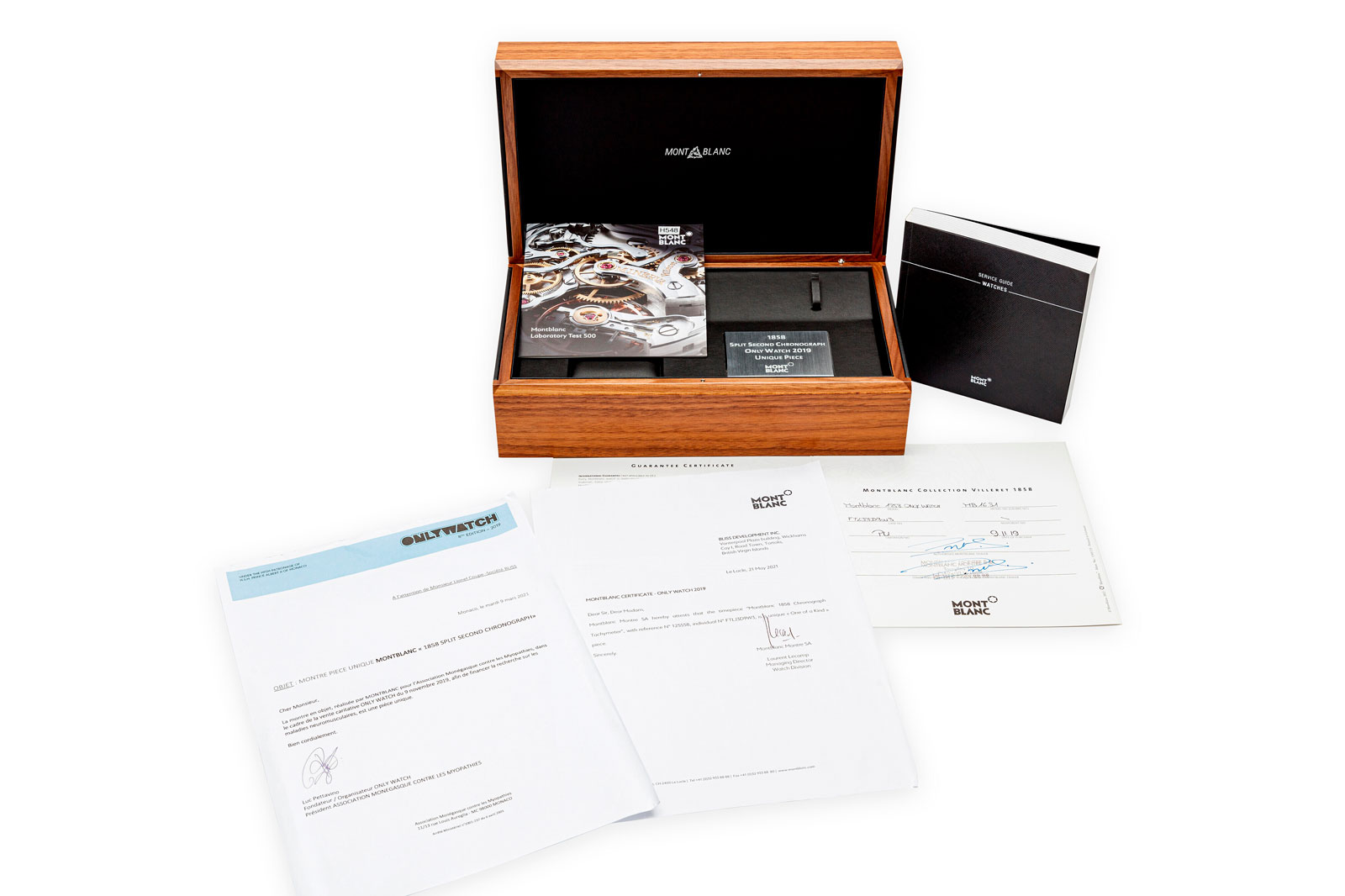
For more, visit the catalogue.
Audemars Piguet pioneered the introduction of the leap year indicator to wristwatches, a feature previously exclusive to perpetual calendar pocket watches. The groundbreaking achievement came with the development of the reference 5516. Limited to just nine examples, production began in 1955, with all units sold between 1963 and 1969.
A significant milestone in horological history, the reference 5516 became the first of its kind, setting Audemars Piguet apart as an innovator in watchmaking. Following this groundbreaking development, the industry witnessed a two-decade hiatus in the availability of perpetual calendars with leap-year indicators until Patek Philippe introduced the reference 3450 in 1981.
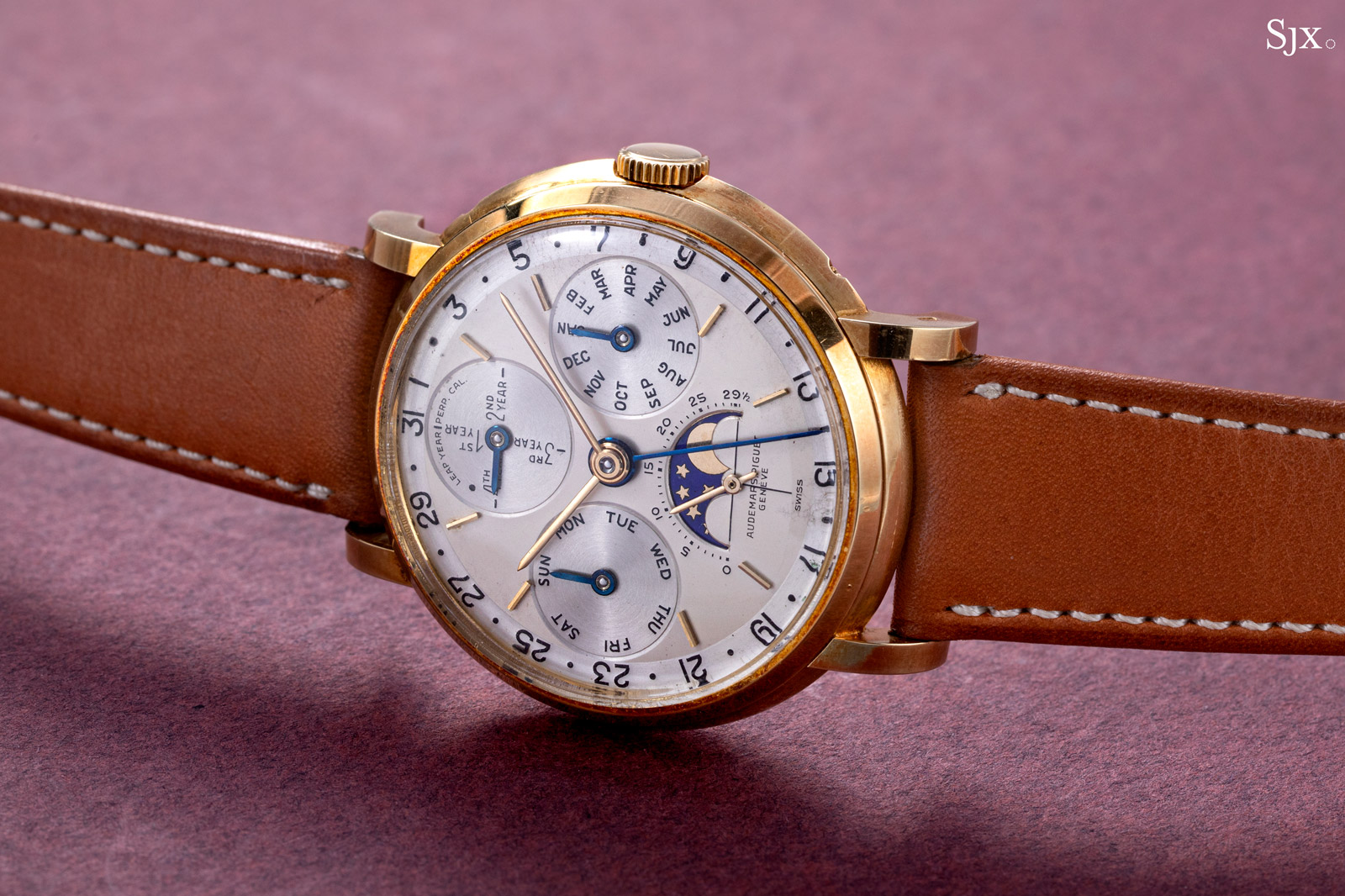
The initial three examples of reference 5516 featured moon phases at 12 o’clock and a leap year cycle with a full indication of the 48 months at 6 o’clock. Subsequently, the last six specimens, including the present watch from 1957, adopted a reversed design, placing the moon phases at 6 o’clock and the leap year indication at 12 o’clock. The later versions showcased a cleaner leap year subsidiary register, omitting the detailed indication of the month, resulting in a more refined aesthetic. Audemars Piguet’s meticulous craftsmanship is evident in the engraved and enamelled scales and designations.
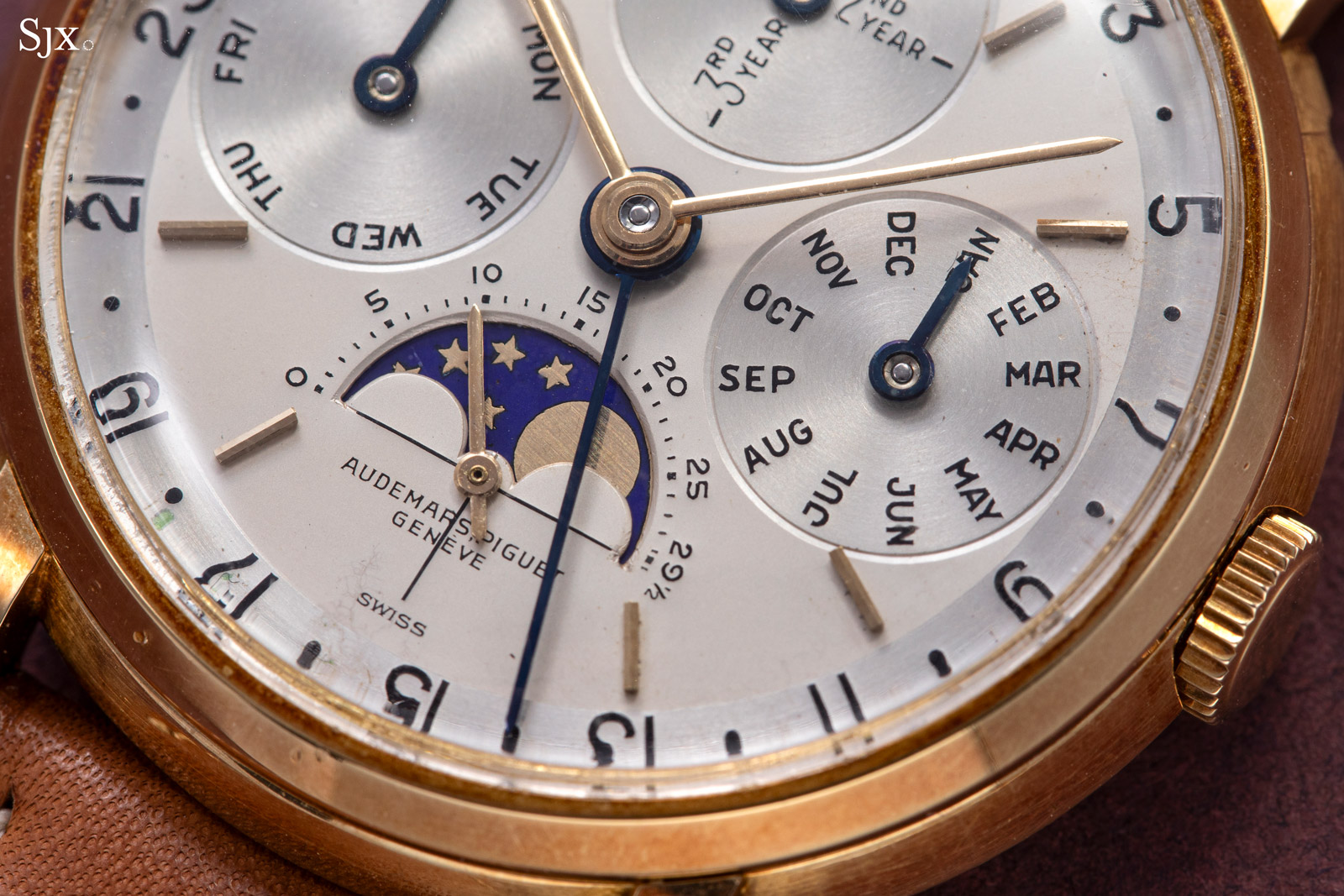
The watch’s unpolished case, featuring a satin finish on the sides of the lugs, sharp edges, and untouched hallmarks, attests to its exceptional condition. The oversized 36.5mm case diameter with downturned lugs achieves a harmonious balance and hints at the trend toward more significant cases that would emerge in the ensuing decades.
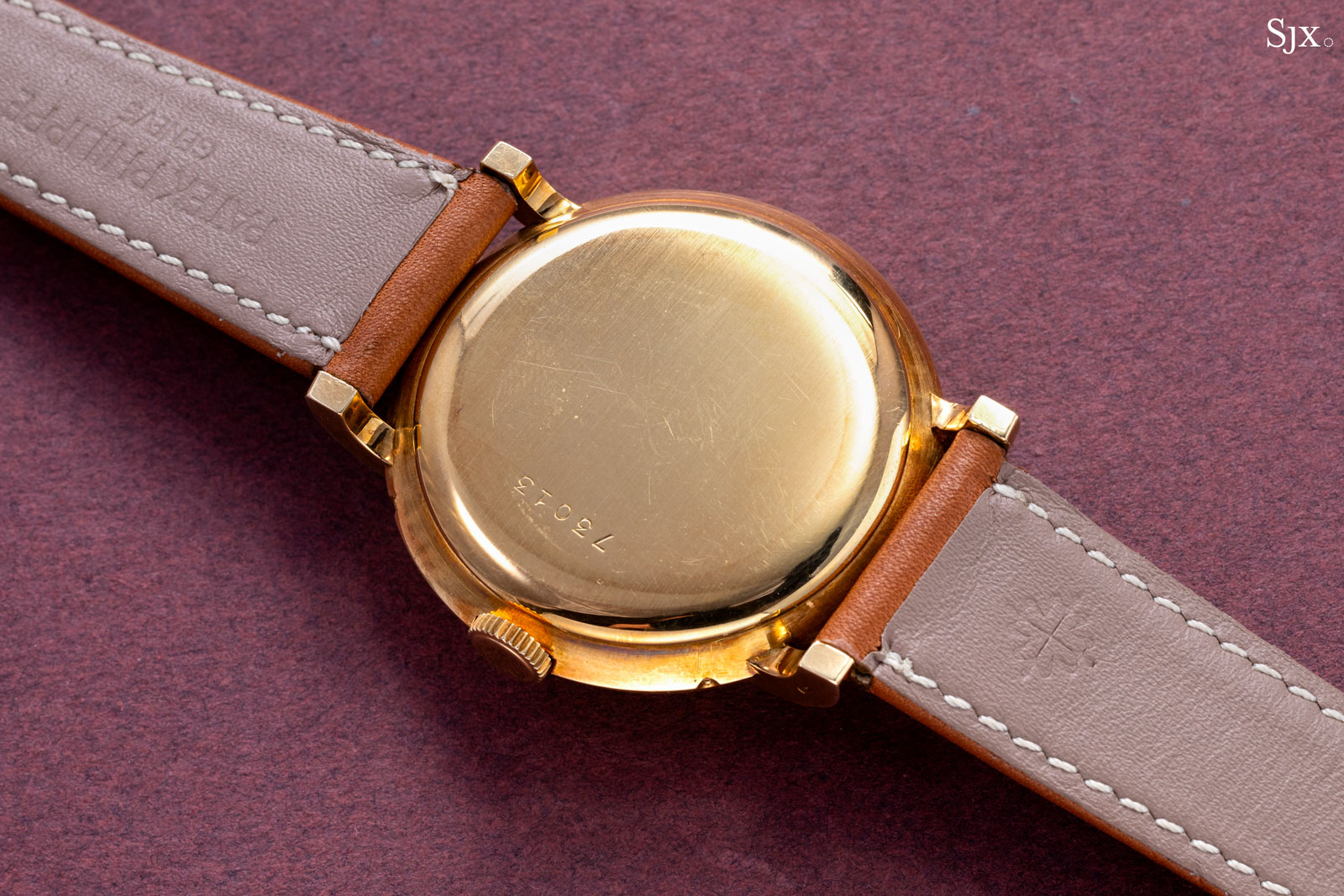
The case maker, Eggly & Cie from Geneva Canton, was responsible for the watch’s impeccable craftsmanship. Valjoux crafted the movement blanks, and the under-dial work was executed by the skilled artisan Alfred Aubert, contributing to the watch’s status as one of the rarest and most important models ever produced by Audemars Piguet.
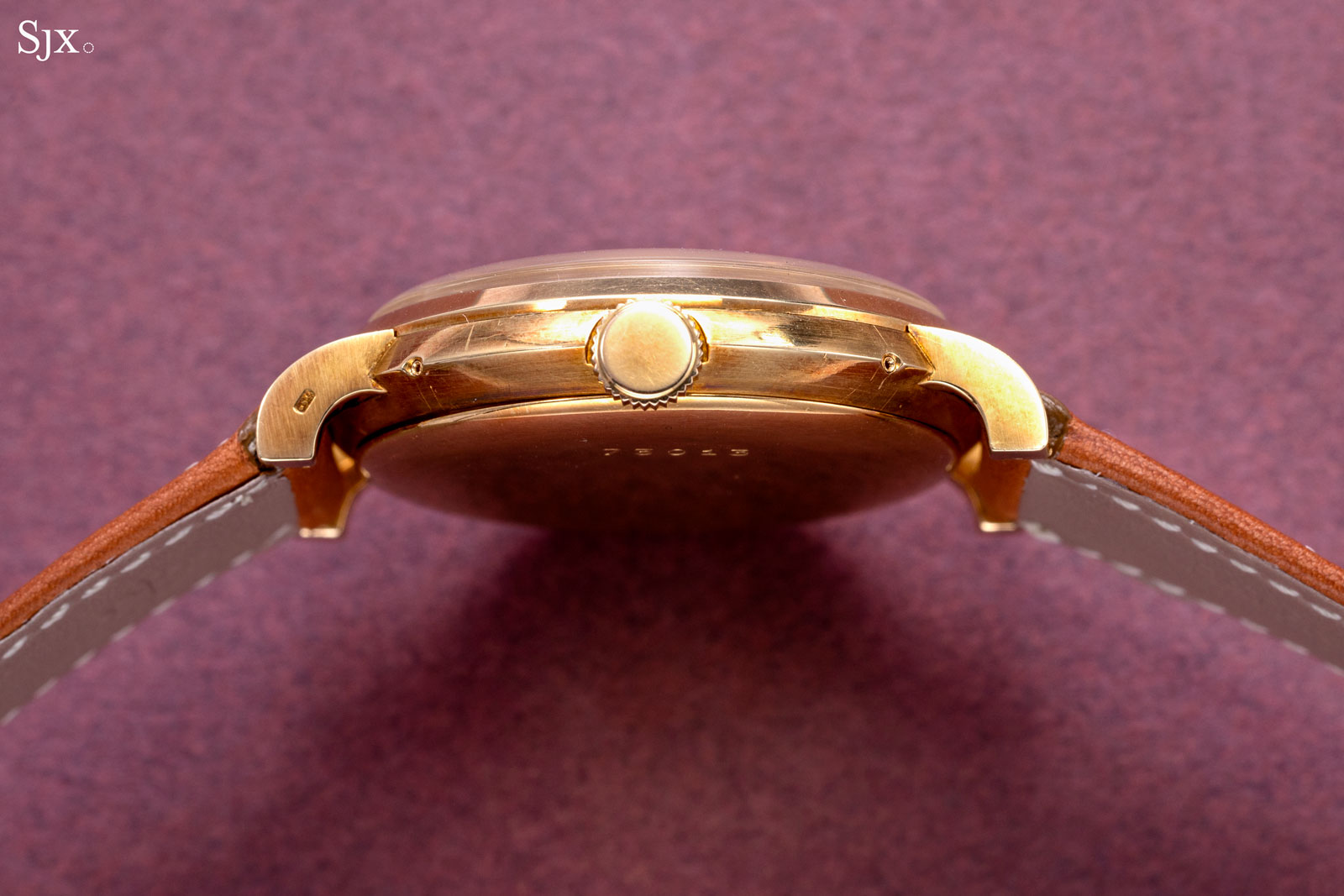
Offered in pristine condition and with an OAK certificate, lot 2605 carries an estimate of HK$6.5-13 million, or about US$833,000-1.66 million.
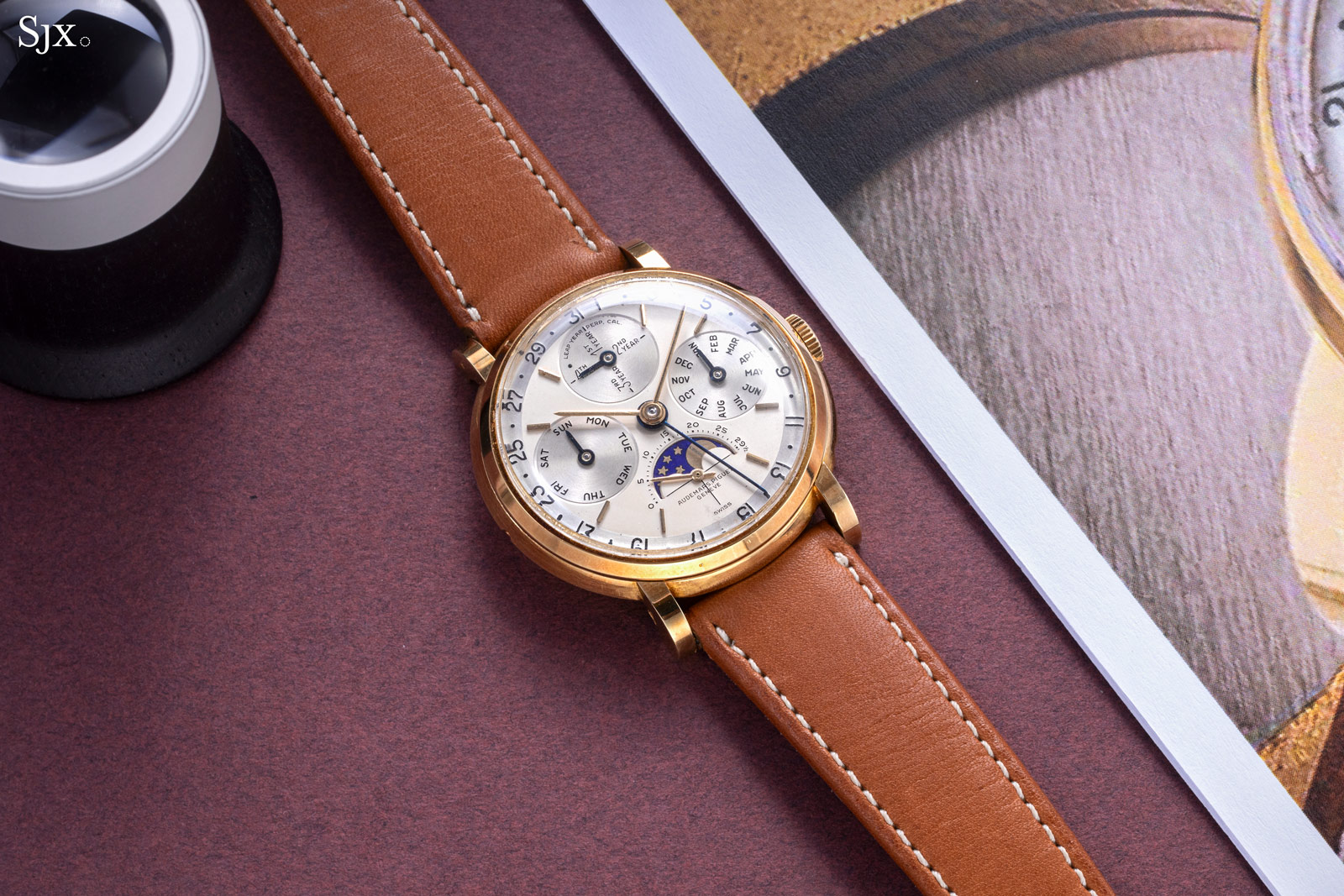
Full lot details here.
The Patek Philippe reference 1436, a split-seconds chronograph, is significant in the brand’s history. Introduced as the rattrapante version of the renowned reference 130, it stood as Patek Philippe’s most complicated wristwatch for several decades. Its development was a response to customer demands for a chronograph capable of timing two events simultaneously.
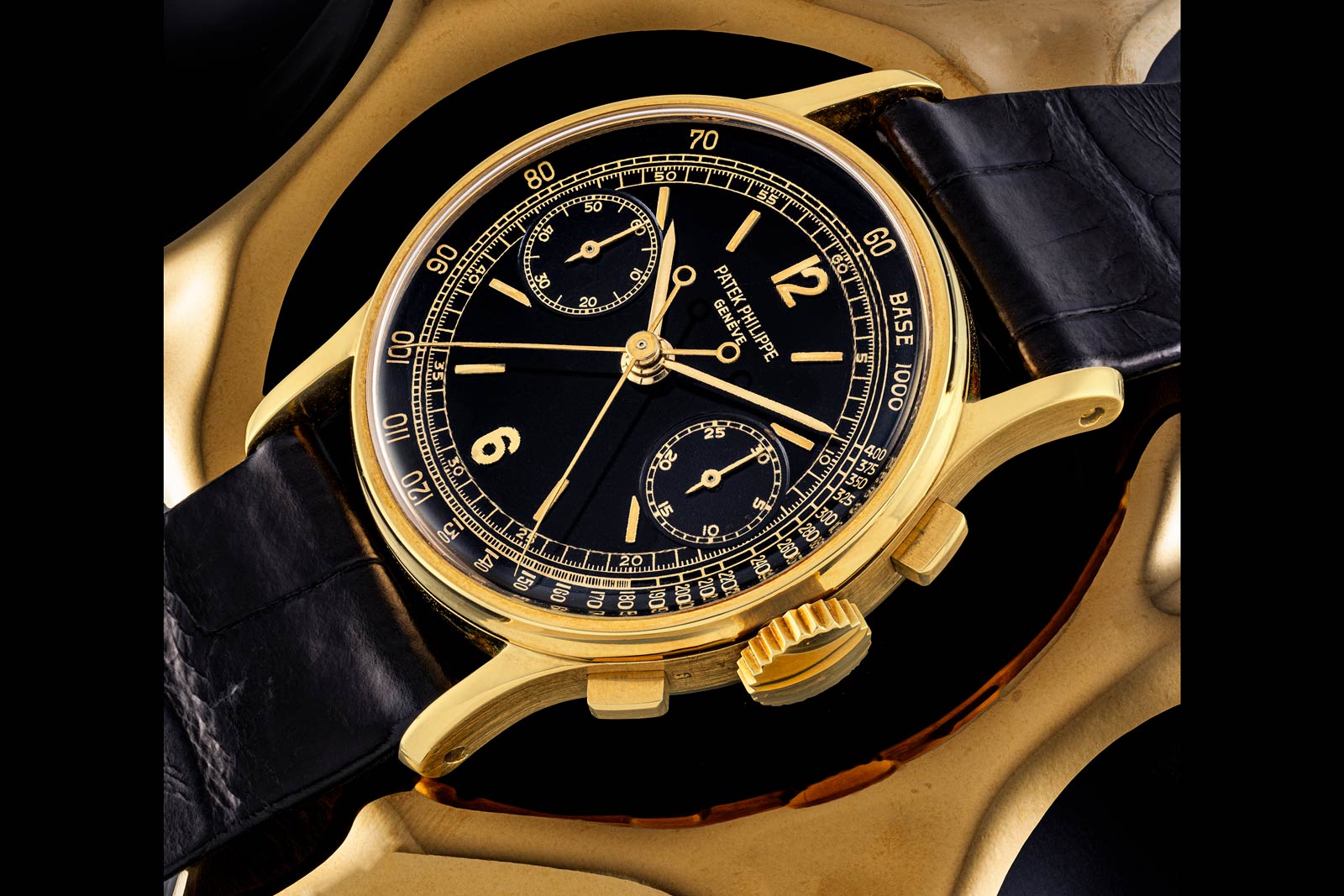
It led to the creation of a masterpiece fitted with the calibre 13′” 130 CCR, expertly finished by Victorian Piguet to the highest standards. The movement, based on the 13-ligne, was used in the ref. 130 chronograph, and was itself a heavily modified Valjoux 23. Notable modifications include a fully supported chronograph clutch, a cap over the column wheel hub, and the implementation of a swan-neck regulator.
Introduced to the market in 1938, the reference 1436 enjoyed continuous production until 1971 and remained the best-known split-seconds chronograph produced by Patek Philippe. Predominantly cased in yellow or pink gold, this model stands as one of the pinnacles of Patek Philippe’s mid-century production, being the first split-second chronograph ever produced in a series. With no known white gold or platinum examples to date, the reference 1436 is truly exceptional.
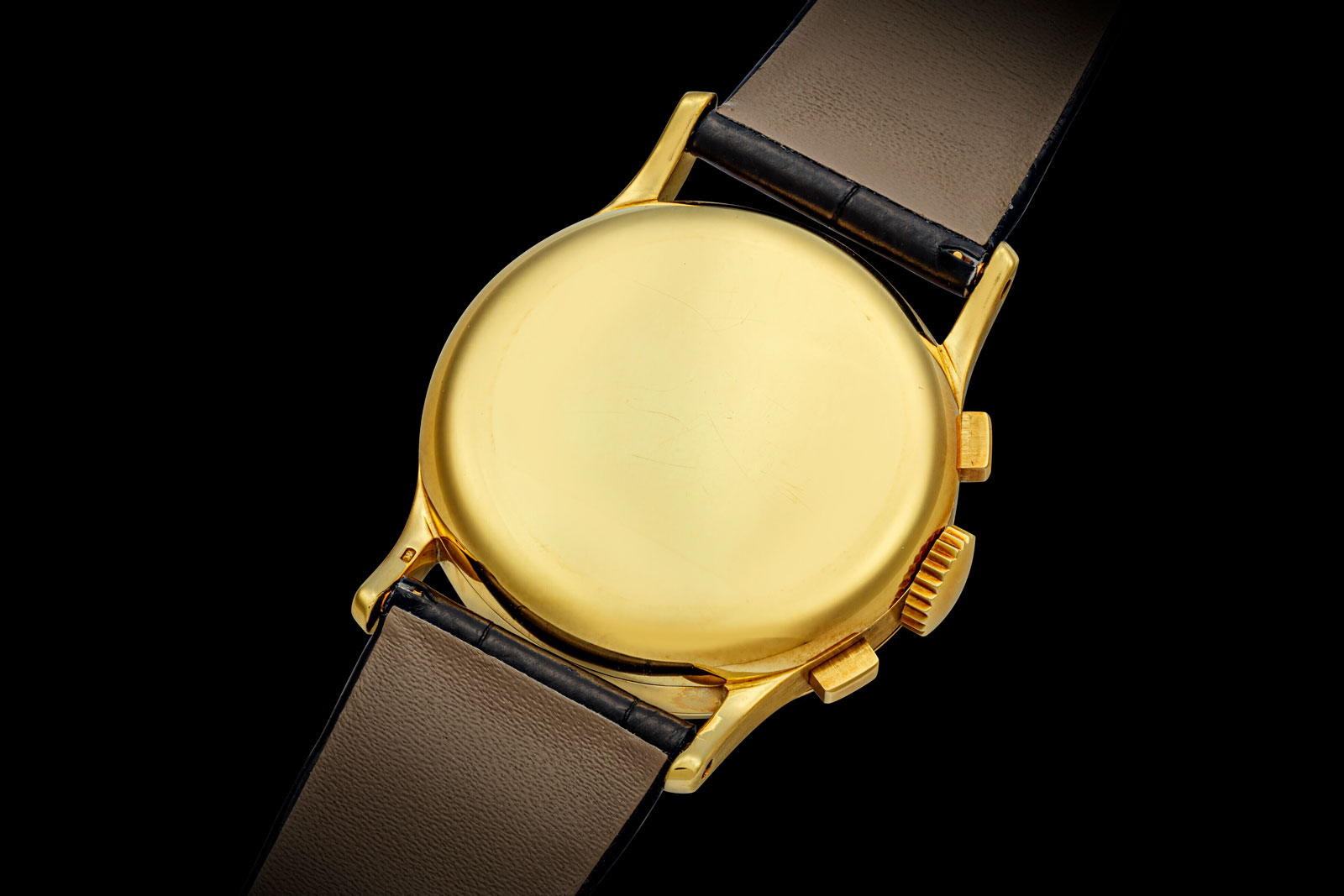
The reference was made in two generations, with a difference in construction regarding the operation of the chronograph function. The first generation, produced until the late 1940s, featured a crown that served as a button to split and reunite the two seconds hands. The second generation incorporated a co-axial push button within the crown for the split-seconds function. The case, made by Emile Vichet, is a three-piece 18K yellow gold with a snap-on back and bezel. With roughly 140 examples made and only 120 in yellow gold throughout its approximately 33-year production period, the reference 1436 is a rare and sought-after timepiece.
With its ultra-rare black dial made by Stern Frères, the present watch is one of only 59 examples in yellow gold known publicly today and possibly one of fewer than half a dozen pieces with this precise dial configuration, making it a truly exceptional and highly coveted vintage Patek Philippe.
Offered with an OAK certificate, Patek Philippe extract from the archives, presentation box and comprehensive study by Tortella & Sons, lot 2607 carries carries an estimate of HK$4-8 million, or about US$512,800-1.02 million.
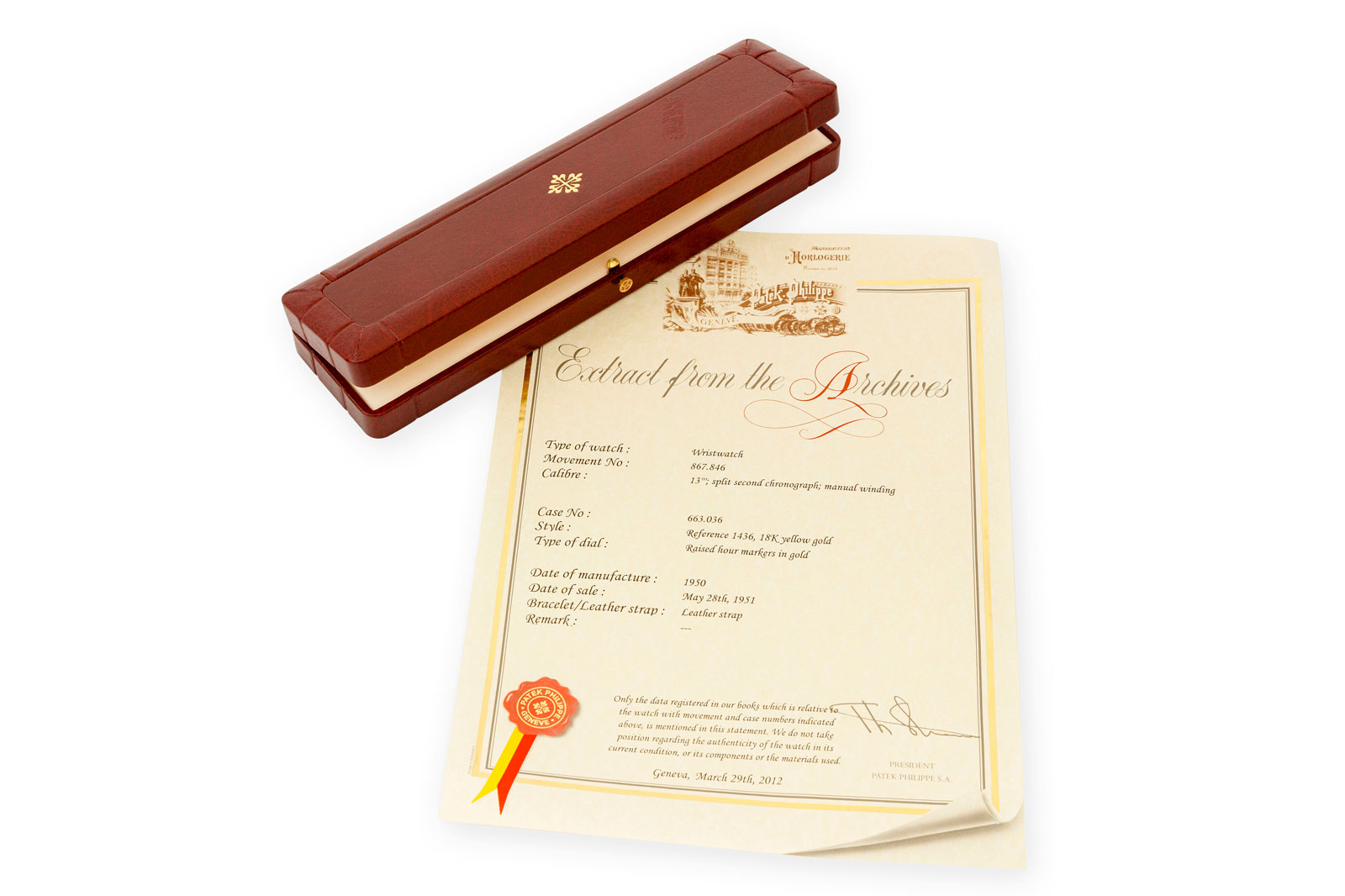
To know more, view the listing here.
Preview and auction details
All lots will be on show during the preview in Hong Kong during the run-up to the auction. Both the preview exhibition and sale will happen at Halls 3C to 3E of the Hong Kong Convention and Exhibition Centre.
Halls 3C-3E, Hong Kong Convention and Exhibition Centre
1 Harbour Road
Wanchai, Hong Kong
Preview
November 25, 10:30 am – 6:30 pm
November 26, 10:30 am – 12:00 pm
Auction
November 26, 1:00 pm (lots 2201-2343)
November 26, 6:30 pm (lots 2501-2639)
All times and dates are local to Hong Kong (GMT+8).
The catalogues for both sessions are online – the first includes the Important Watches sale, and the second comprises watches from the OAK Collection.
This was brought to you in collaboration with Christie’s.
Back to top.